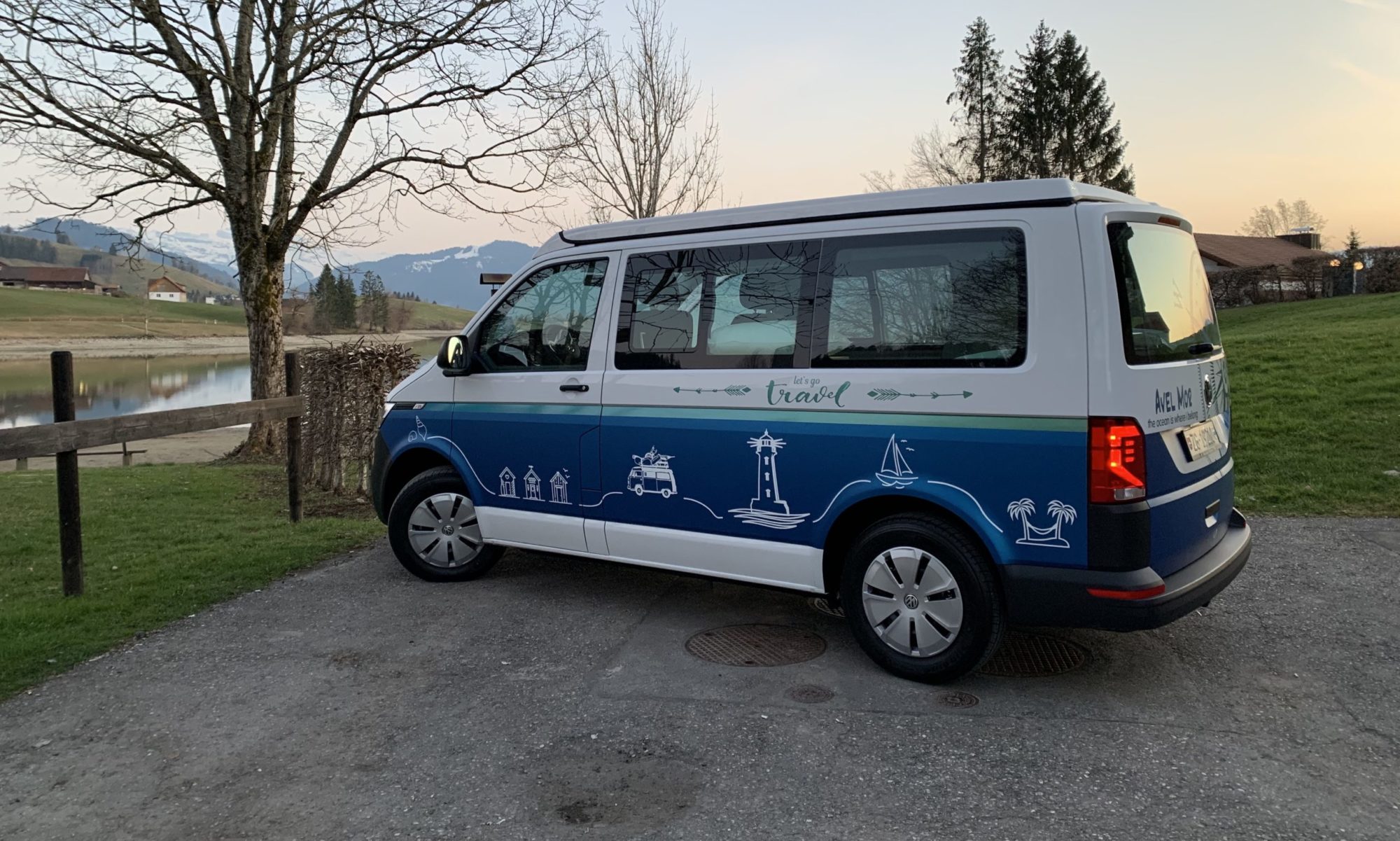This time the taxi is on time – and takes me down to the harbour pier. There are already a lot of people waiting to be boarded onto the ferry over to Santo Antão. Things work out extremely organised – so unlike Africa. I’m surprised as the atmosphere reminds me of many a trip that my friend Brigit and me have made through Western Africa. At 6h58, two minutes prior to departure time, the ferry puts out to sea. The sun is rising over the island of São Vicente when we are already halfway over to Santo Antão. It’s a beautiful sight, peaceful, when we’re leaving the natural harbour crater.


My driver Eloi is waiting for me this time, all right, on top of the stairs when I arrive in Porto Novo on Santo Antão. We drive up the steep old road to a small village called Lombo de Figuera and a bit further. On the way there, Eloi tells me that all the forest has been afforested by the Portuguese. Also, the roads have been issued by the Portuguese. All of them are cobbled roads with a rim-like wall at their side. This used to be the main road to the other side of the island before the road along the coast was built in the 1970ties – only in the 1970ties. This side of the island is rather dry and empty, but over there it will be lush and plentiful, he promises, even though it has not rained for four years.
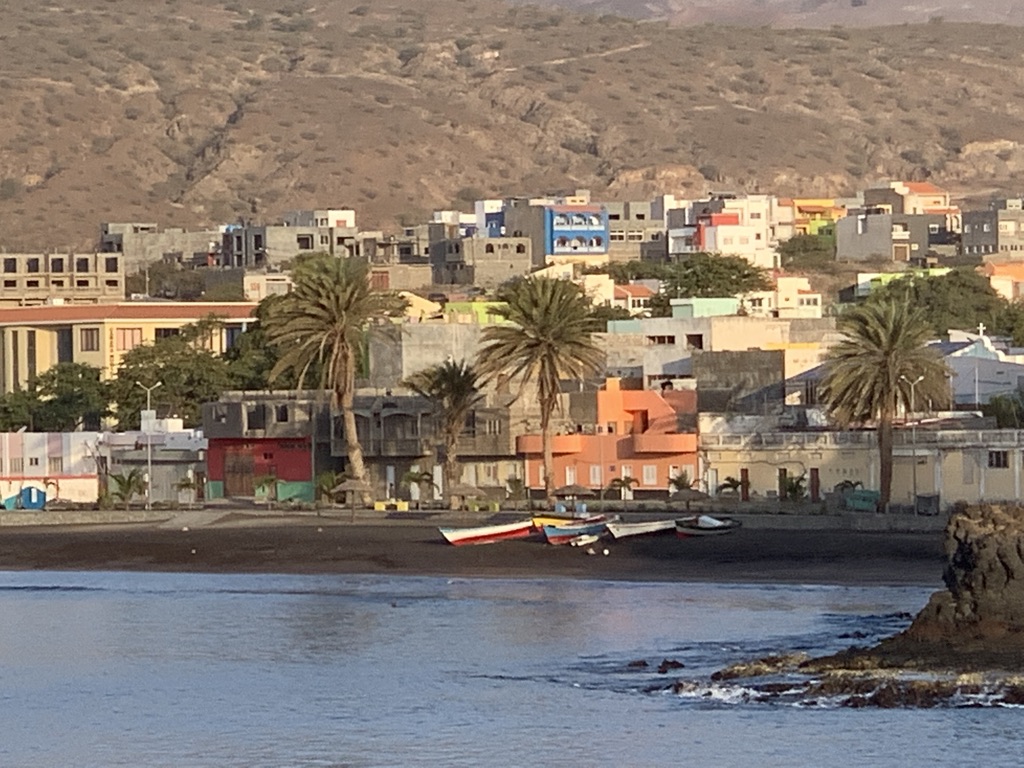

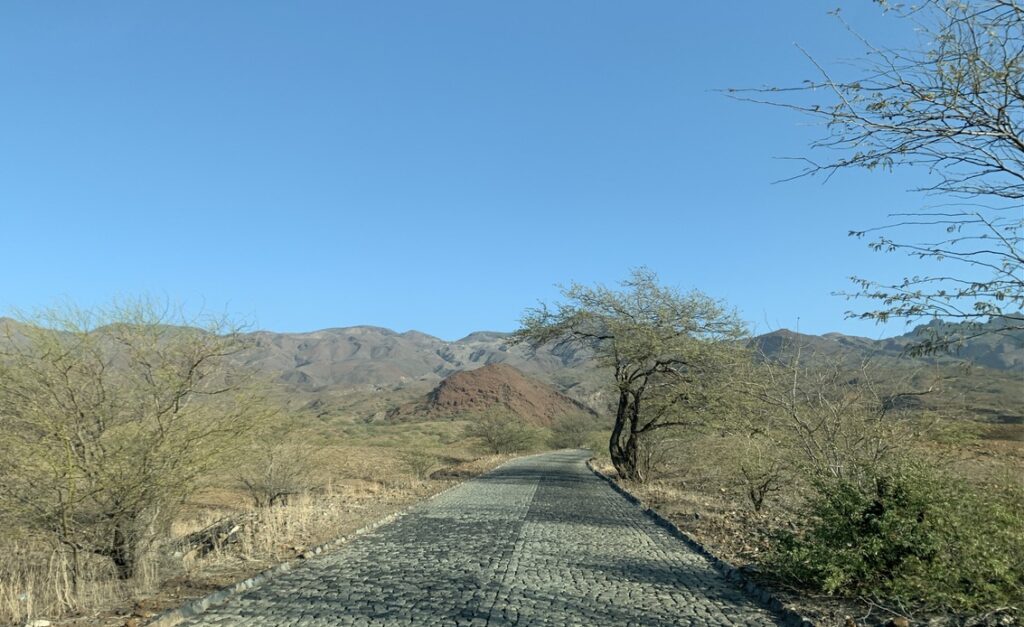
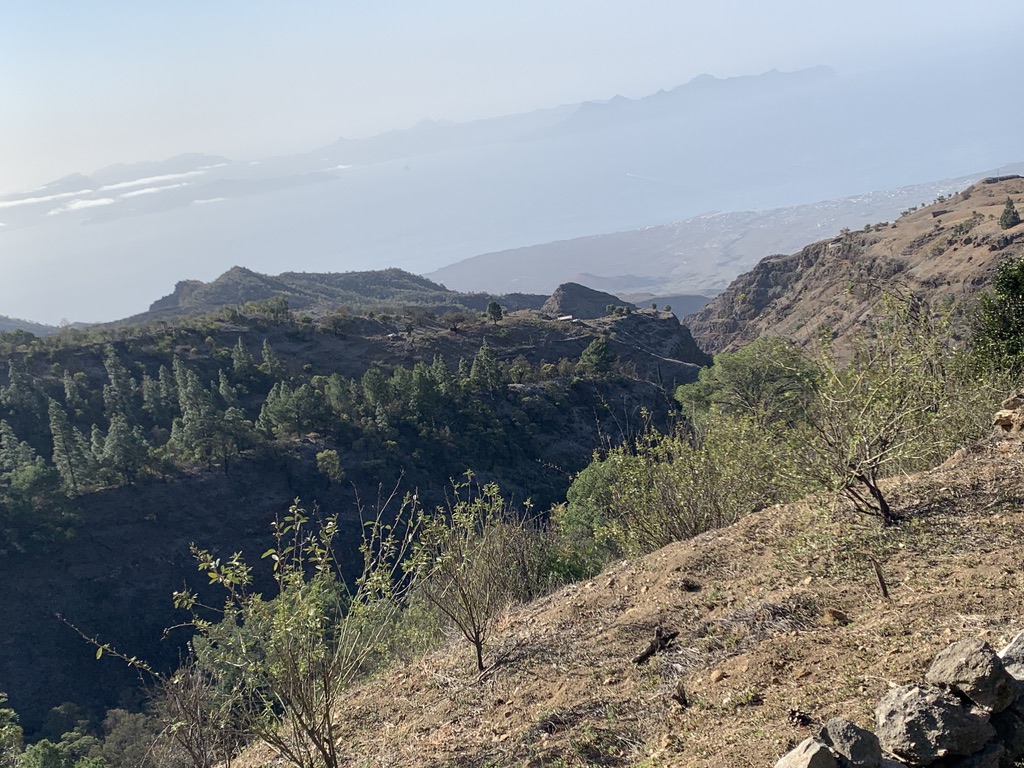
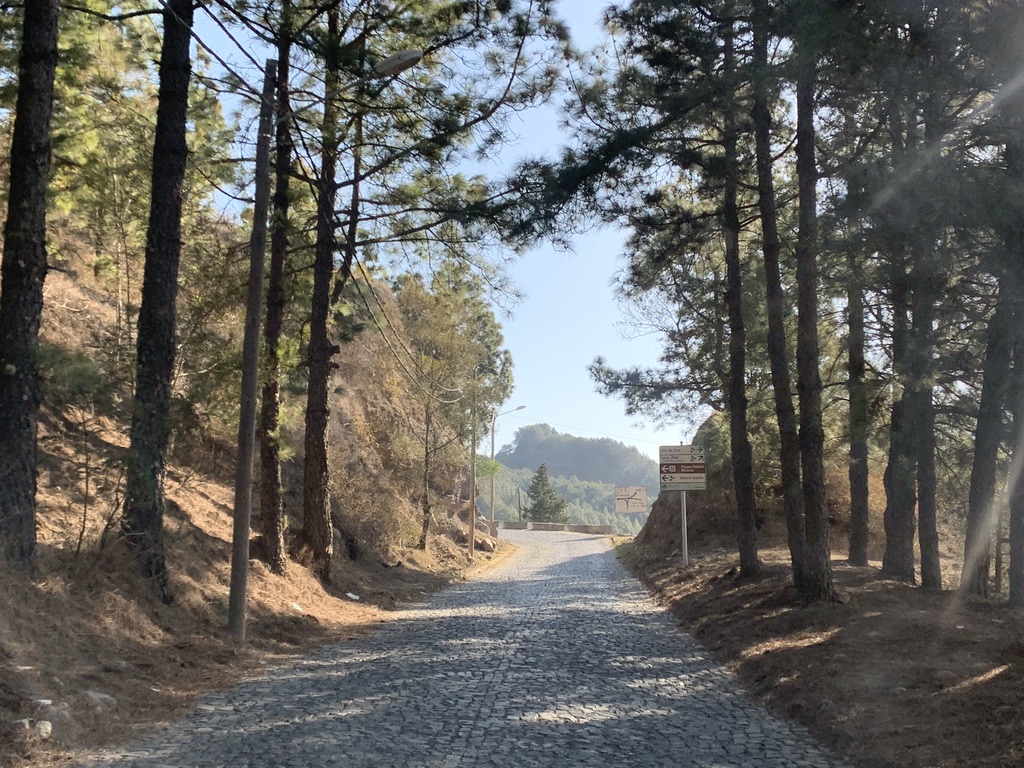

I will later tell him to turn of the engine of his vehicle each time he stops – as he does not – to contribute his bit to save the climate. He’s not convinced of my idea. He thinks the engine would take harm and starting a diesel vehicle would use more petrol than leaving it going. I tell him that a cold engine might indeed suffer from too many starts, but not a warm one. I ask him: “Do you want it to rain again here?” – “Yes.” – “So, turn the engine off each time you stop your vehicle,” I say. „It’s your small contribution to save this planet. And if everyone did, we had a much bigger effect even.“ He gets silent for a moment, then he says: “From now on I will turn the engine off.”
We get to the rim of the huge mountain range and there is the Paùl Valley before me. We’ve climbed to 1300 meters and I look down into this green world of small terraced vegetable gardens. There are a few colourful houses scattered around, the village of Paùl.
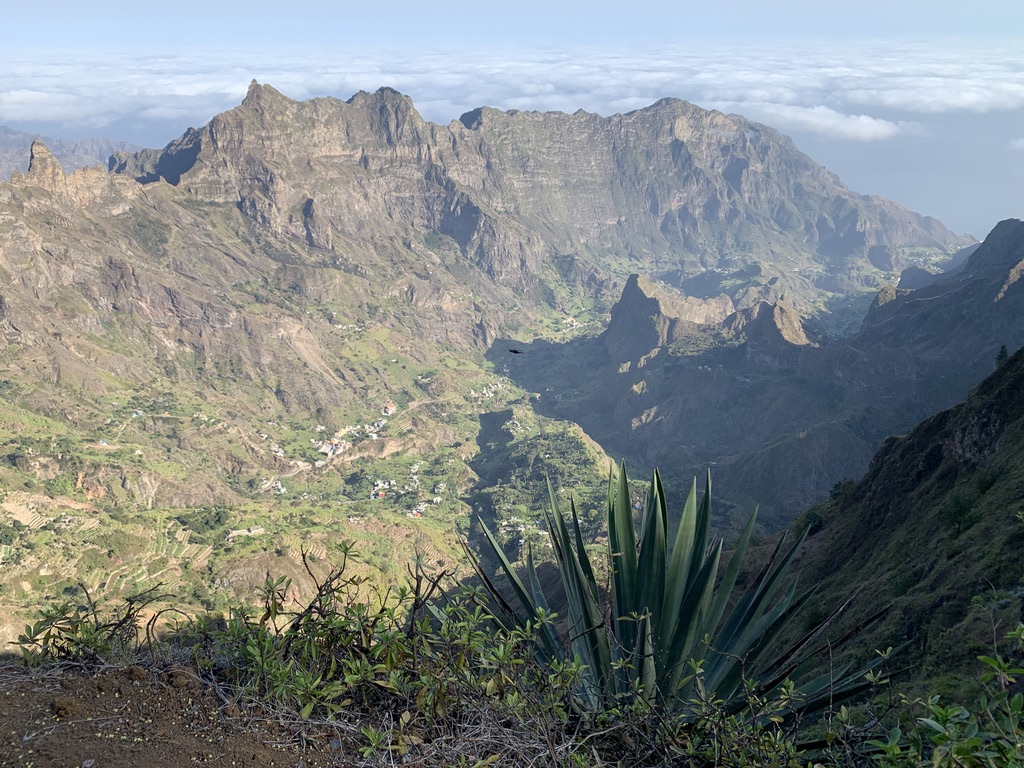
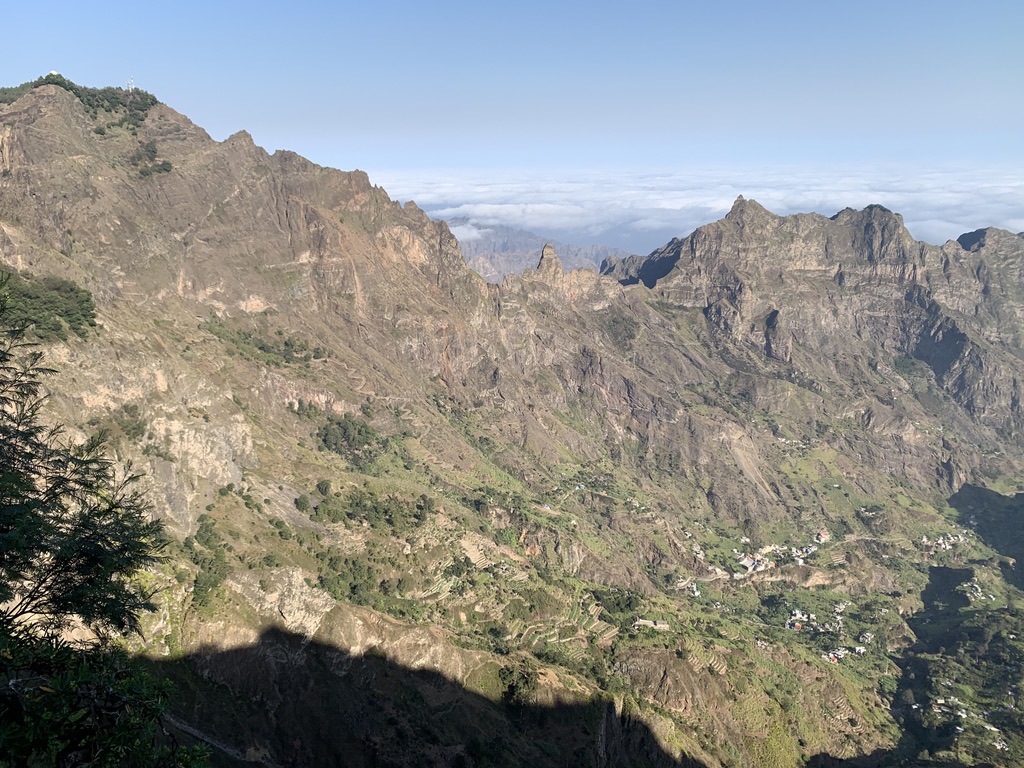
I get out of the car and start my hike within alpine looking pine trees. I walk around the Cova Crater. There’s cattle and the farming up here in the crater is not really green and lush. It’s already getting hot, almost 10h00. Half an hour later I’m standing at the opposite rim of the crater, looking down into the Paùl valley again. Only days later I will be aware how lucky I was because the view is clear and bright, which cannot be taken for granted at this time of the year.

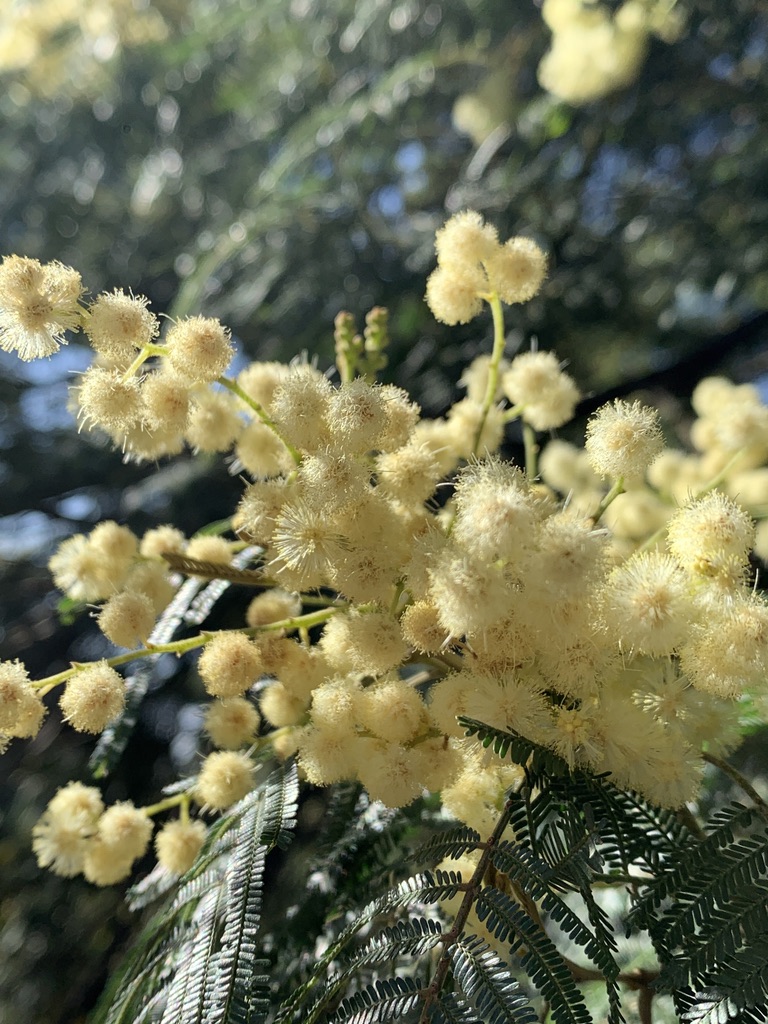
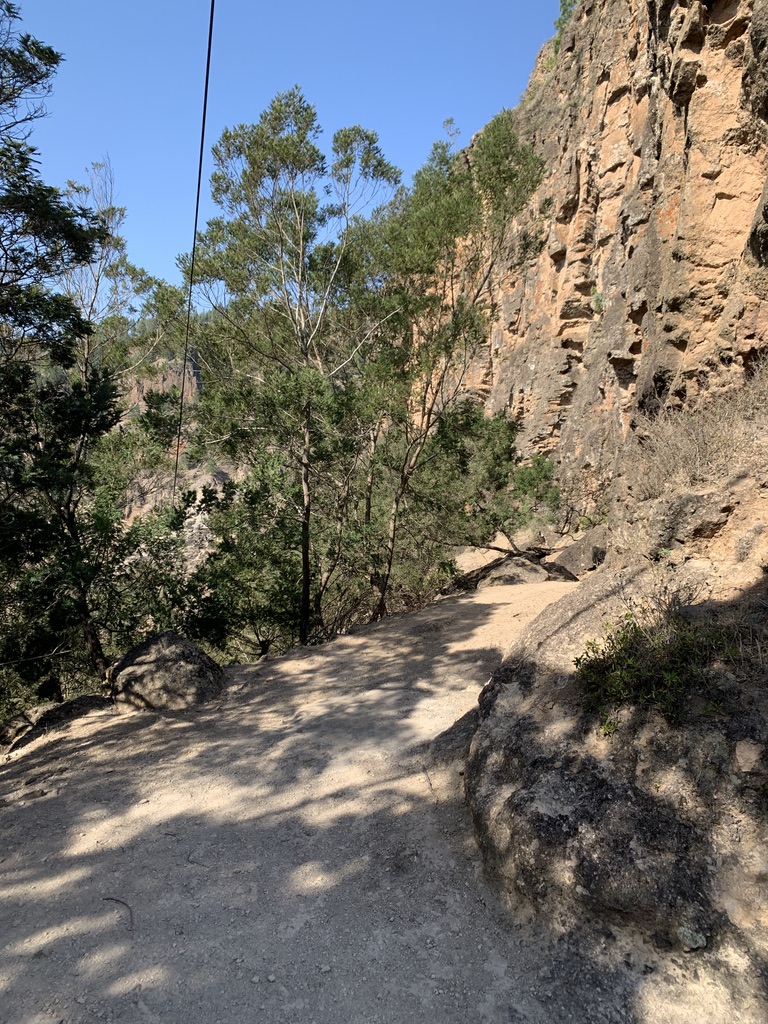

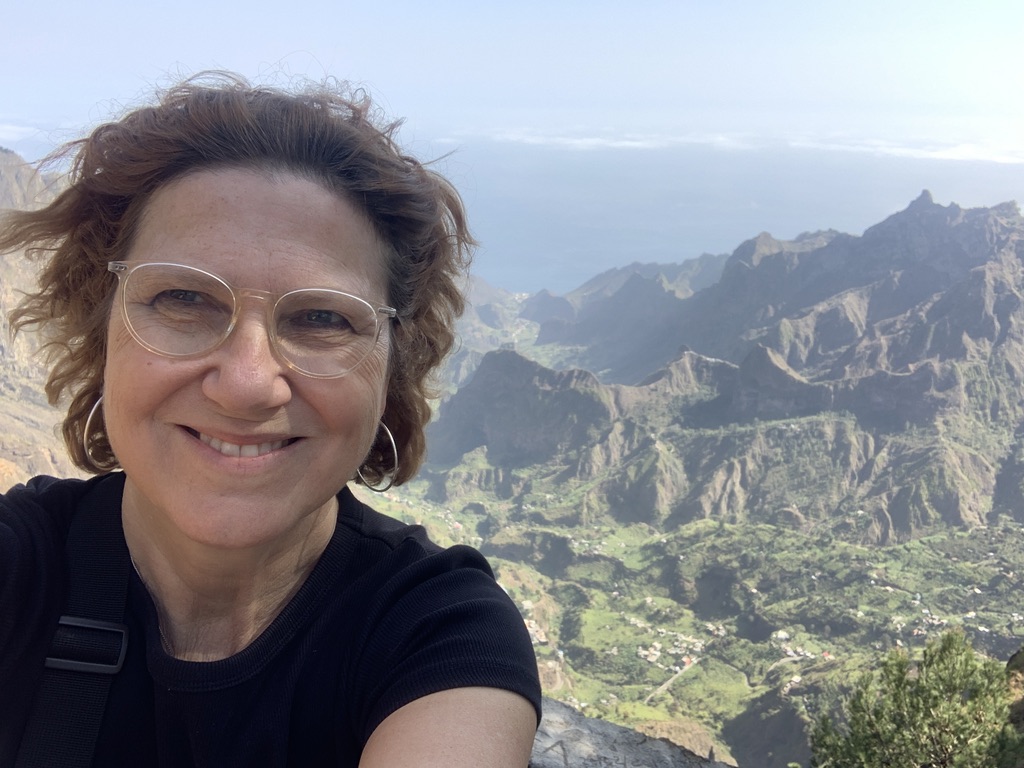
I’m sitting up there, enjoying the view, when the French family from this morning ferry turns up. I had offered to take a family picture of the couple and the three girls. There is also „mami“ and „papi“, and „papi“ starts talking to me. As so often it is the fact that speak French pretty well that issues the topic. But we quickly move to other topics and I find out that he and his wife have actually sailed from Arzal in Brittany down here. They have brought water filters to Sénégal, being part of the association “Voile sans frontières” and helped to build a school garden in the Sine-Saloum region in Sénégal. Now they have come here to see their son and grandchildren (the family I took the picture of in the morning) before they will sail on, for another year or two … what interesting people. Unfortunately, they have missed the right path and turn back, so our conversation is abruptly interrupted.
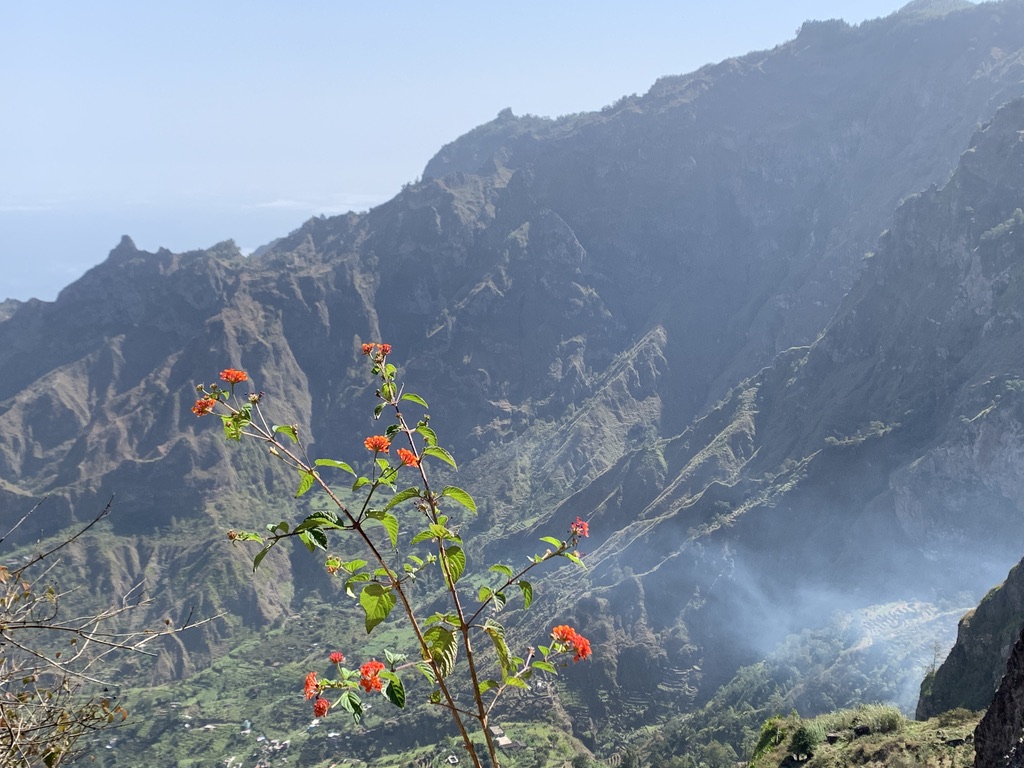
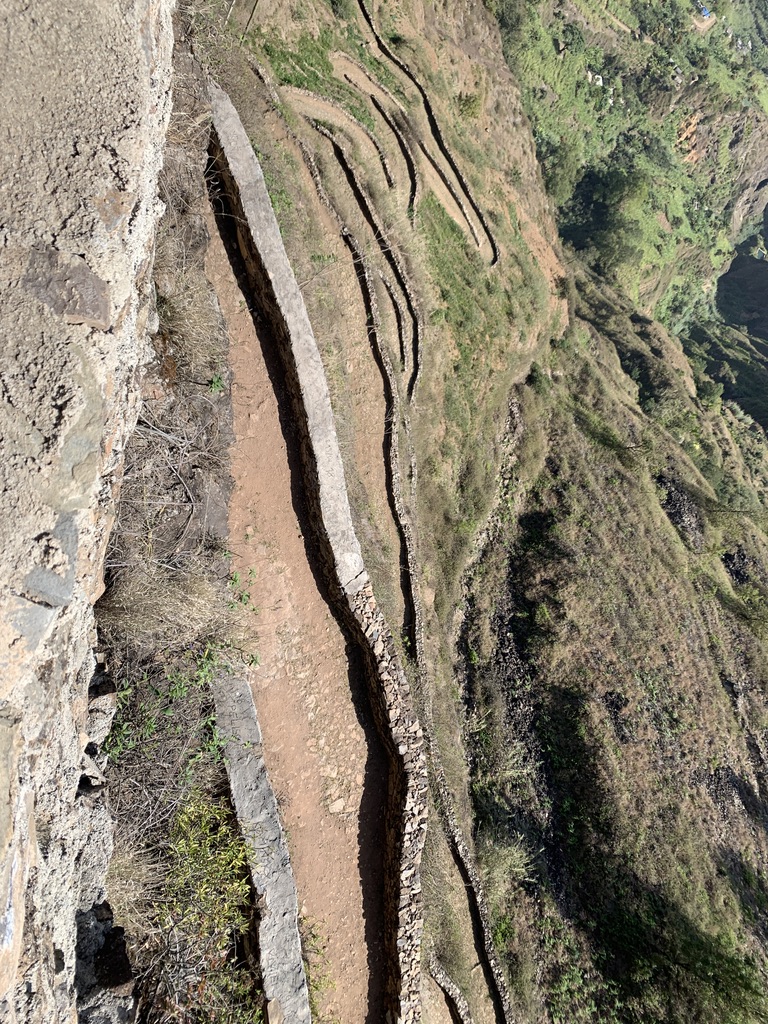
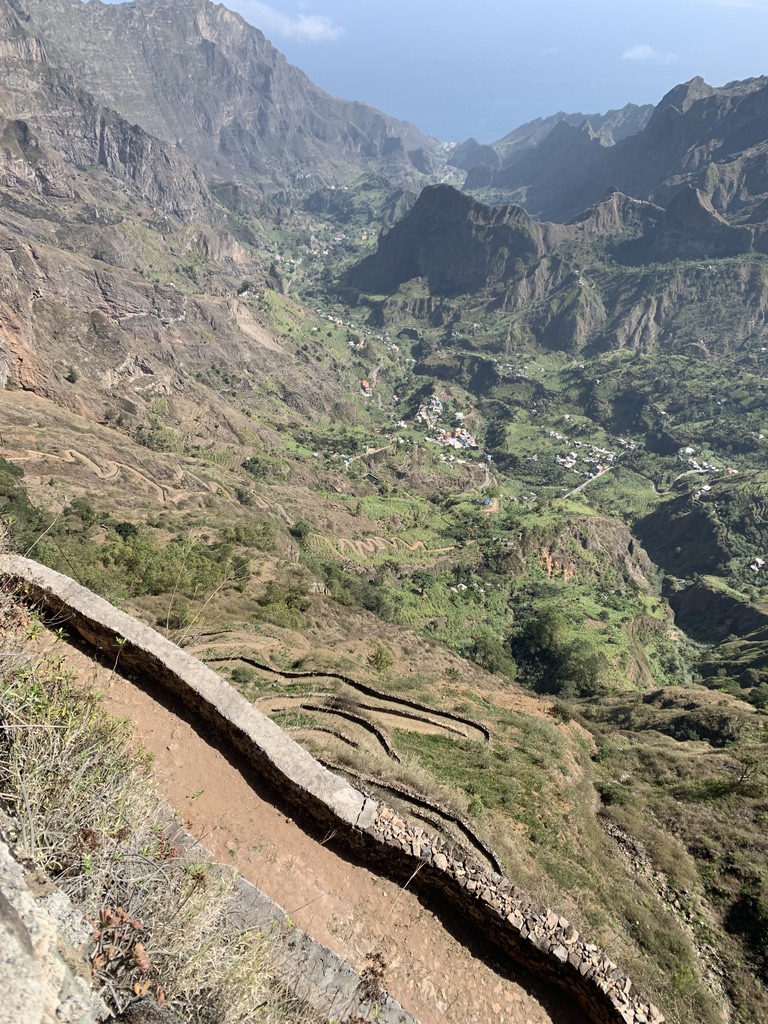

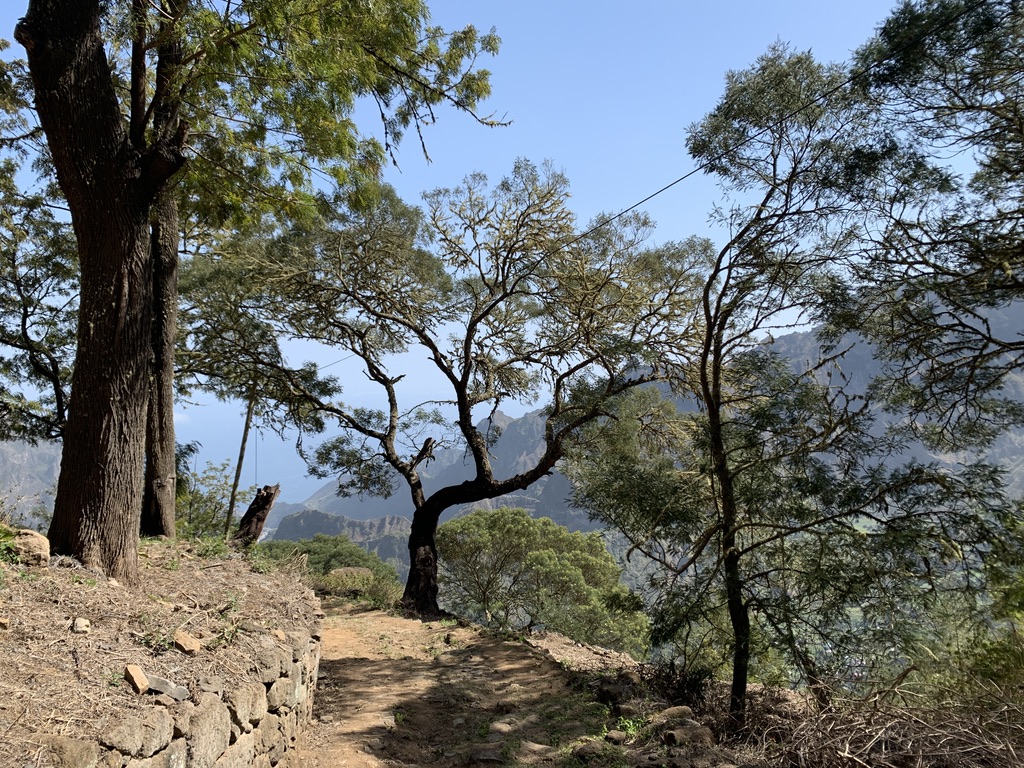
I turn to my way down into the Paùl valley. It is a perfect cobbled path, about 1.5 meters wide, but incredibly steep it leads the almost vertical wall down in serpentines. Oh, the calves! I take my time, stop to take pictures again and again, buy locally grown coffee from a woman, taste “grogue” and „ponche“ from another one – and actually buy maracuja (passionfruit) and coco „ponche“.
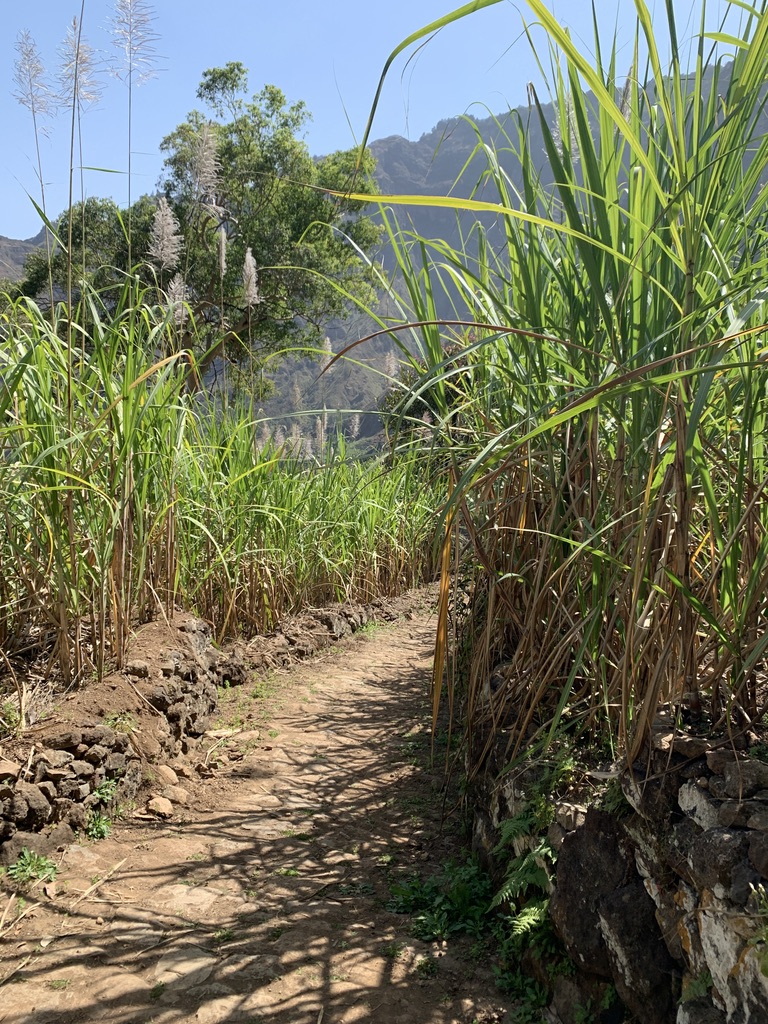
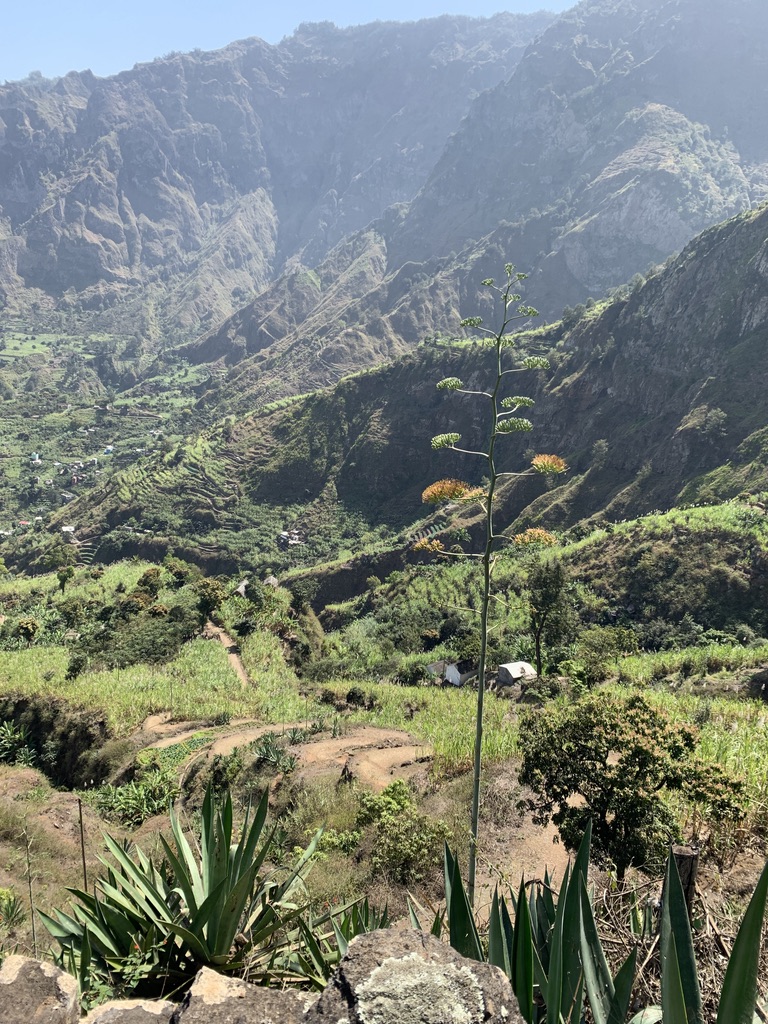
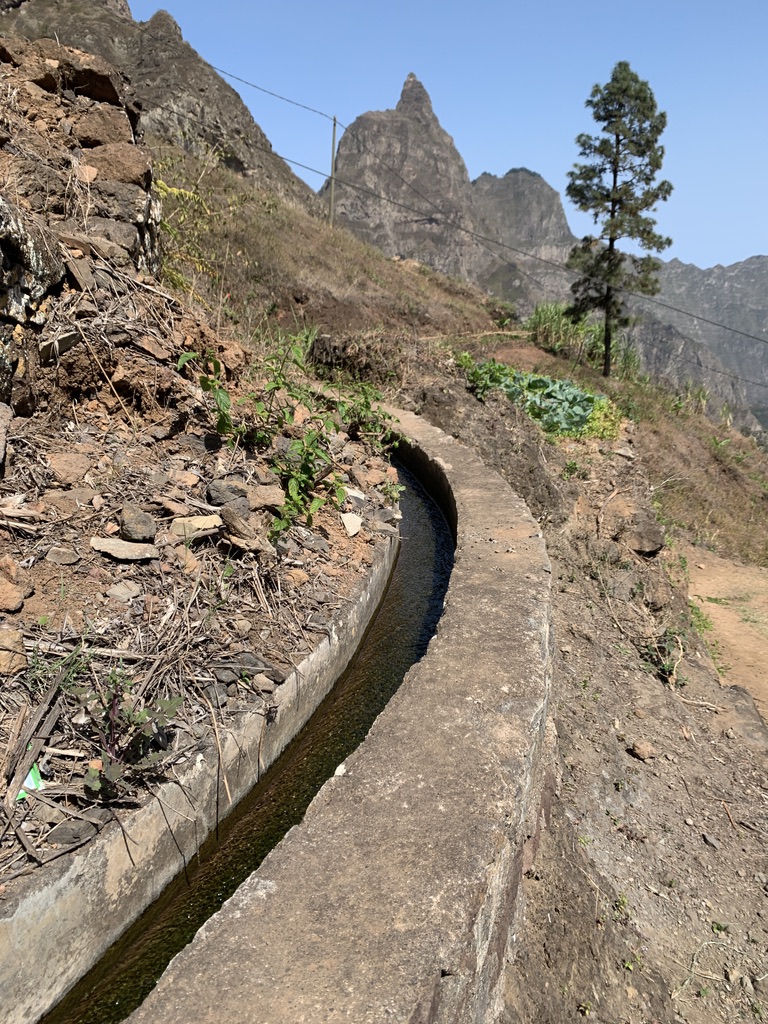
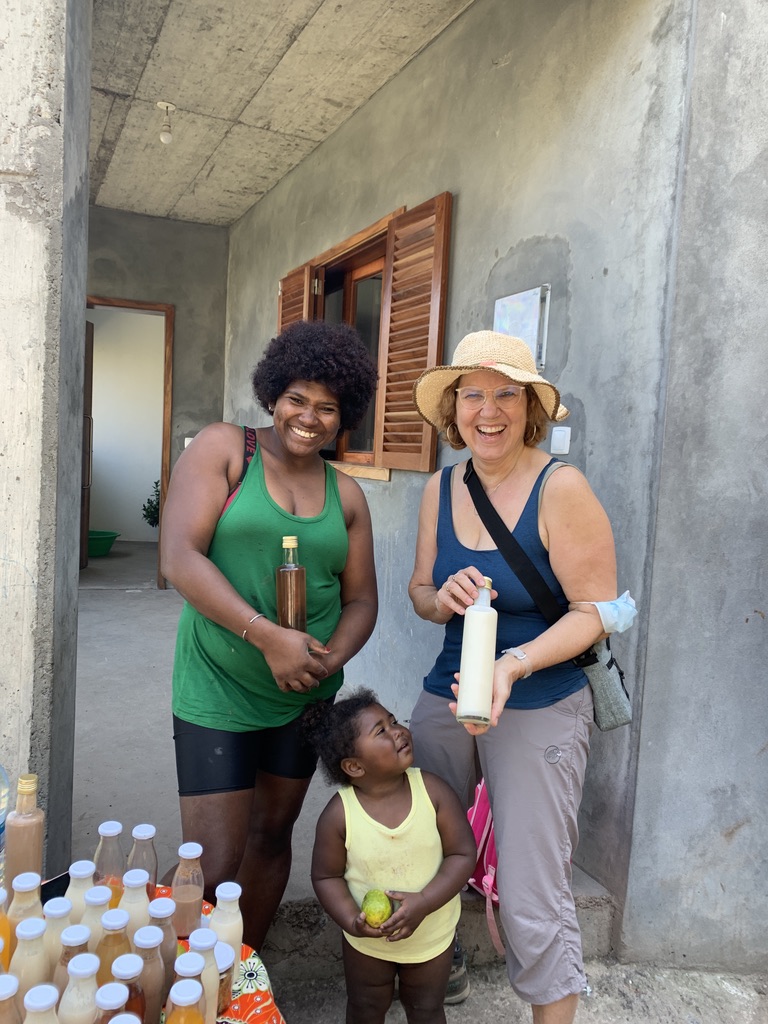
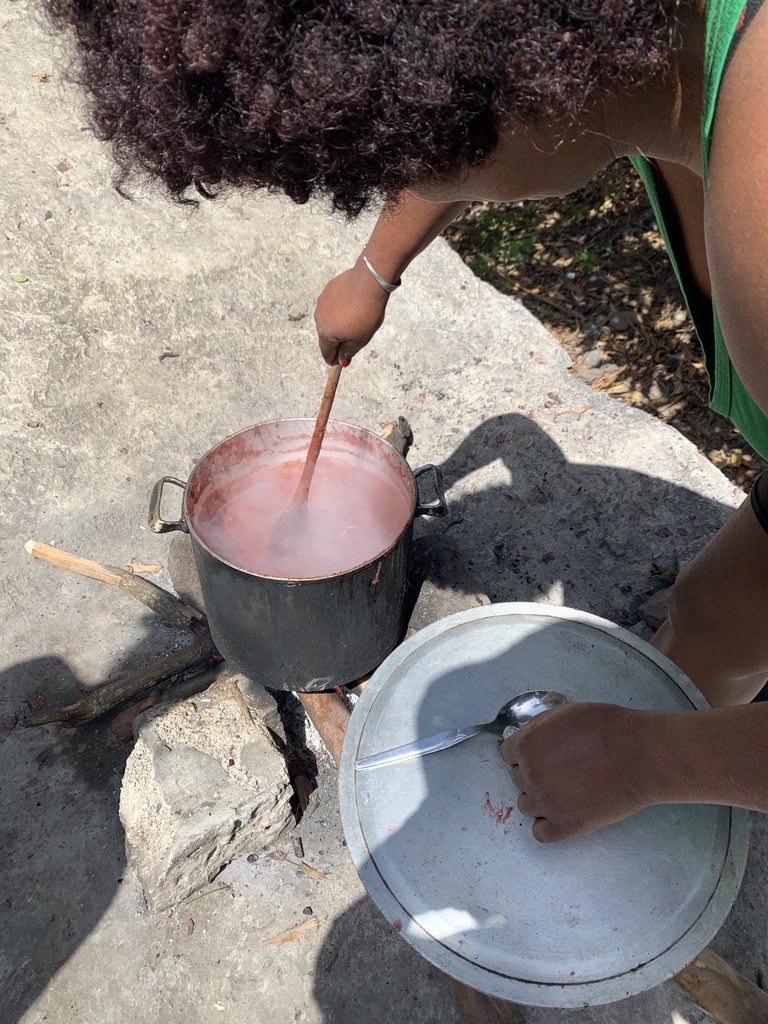
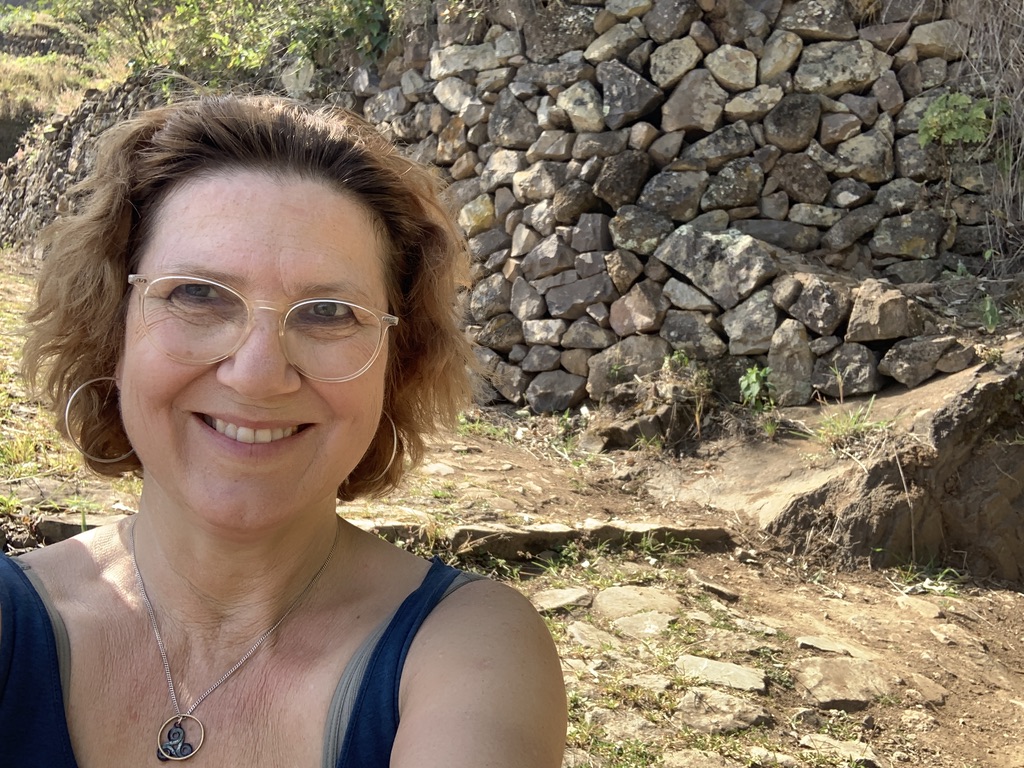
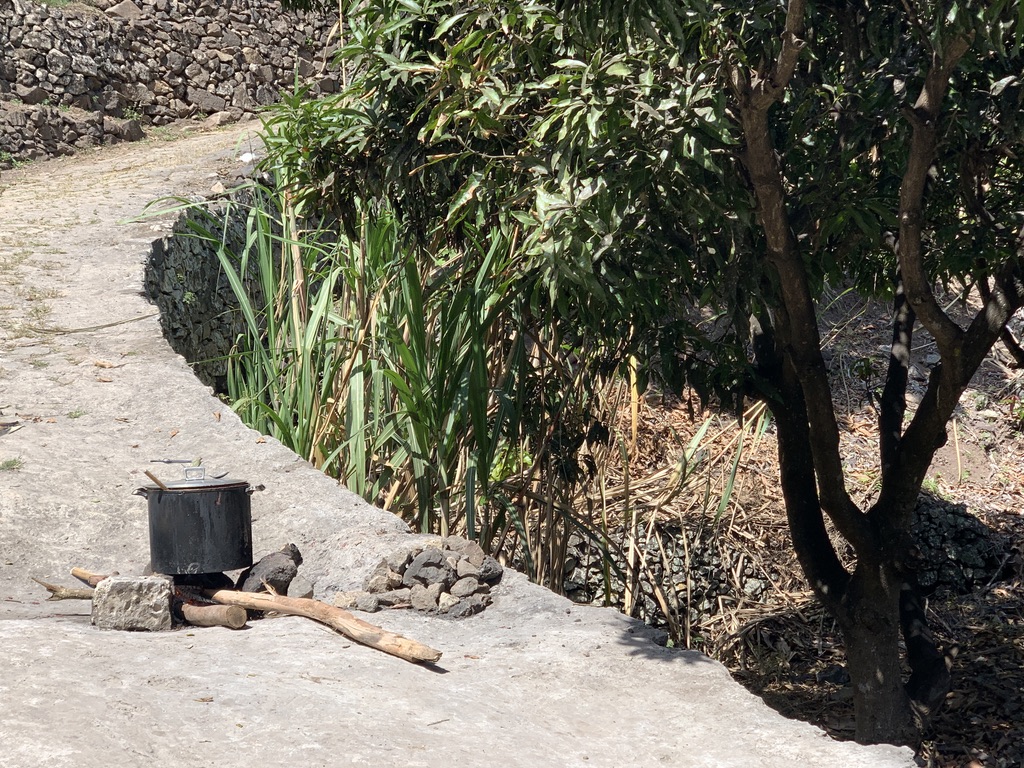
I’m hot with the tapping sun when I arrive at the hostel. At first, I’m a bit disappointed of the place. The main building, painted in yellow and blue, is a concrete building with huge windows, allowing views to all sides “Aldeia Panoramica”. There is a sparse feel about it, but I like the colorful African fabric cushions. I’m led down to the pool area. Around it are six smaller buildings with two rooms each. They are simply furnished, but clean and somehow meet the place. As I’m so hot from the hike I think I’ll dip in the pool right away. It’s when I’m leaving my room that I see my neighbours, two guys in their early 3oties maybe – and one of the is wearing a shirt “Oléron Surf Club”. I, of course, address him at once asking about that Oléron Surf Club. Rémy turns out to be administrative responsible. Paul, his friend, is a hiking addict, living near Marseille, but also lived for a long time on Oléron. What surprise! And they are pretty baffled as well when I tell them I’ve got a bungalow on the island.
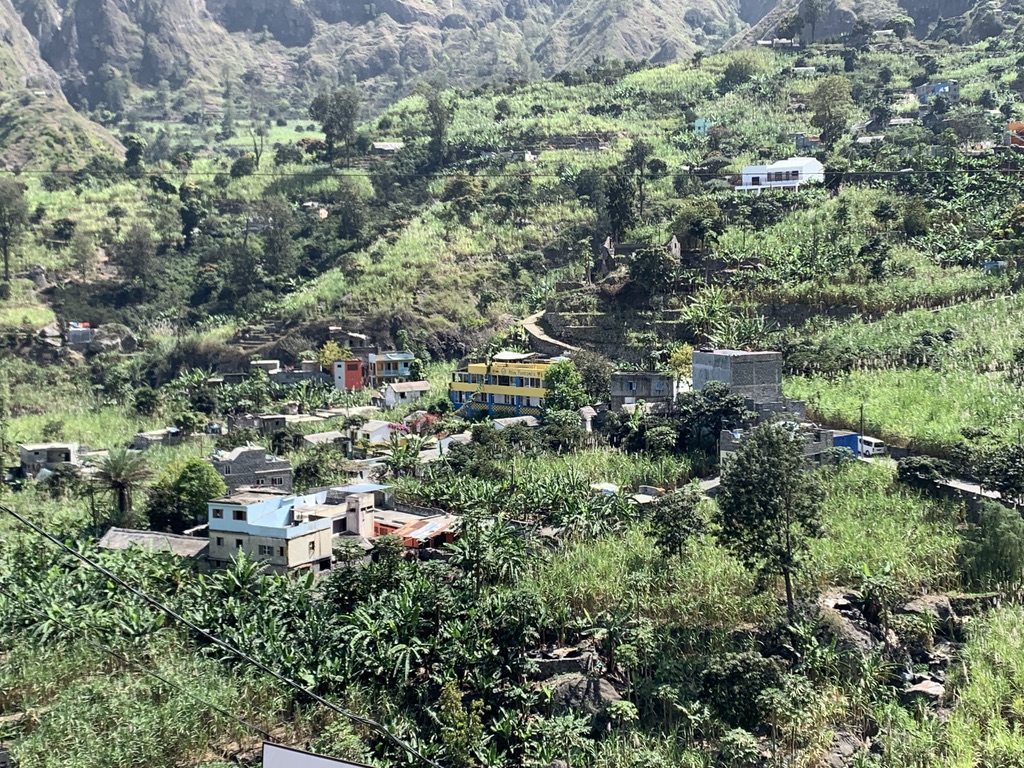
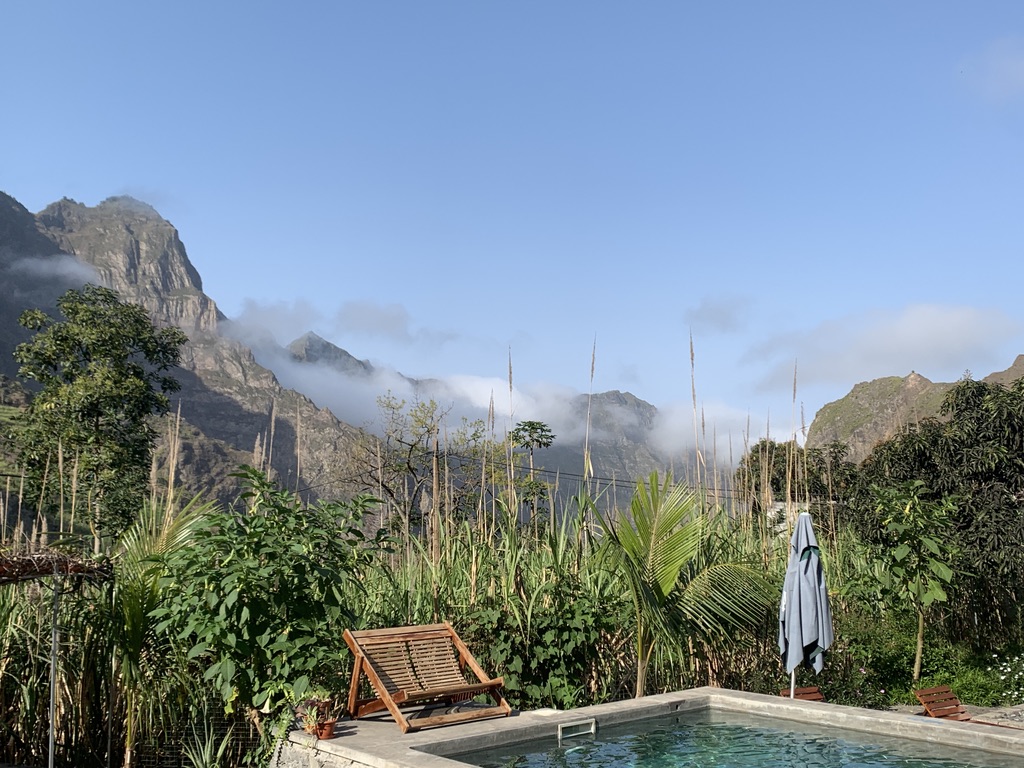

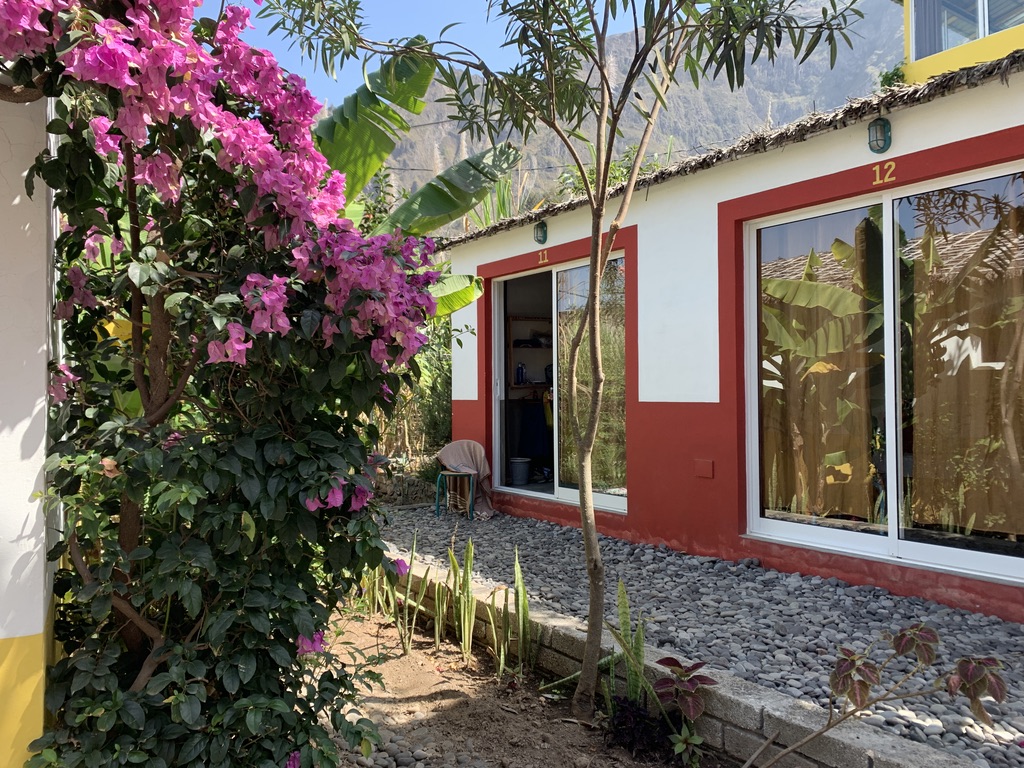
That’s when THEY go off to go up to the Cova Crater that afternoon. Paul is training for some trailing competition he has gone in for. I have a dip in the pool – and have just finished changing when Paul is back. He made it in 1h40 – up and down! 15 minutes later or so, also Rémy is back down. They’ve literally run down the steep path that I had walked in about 90 minutes (down – one way!).
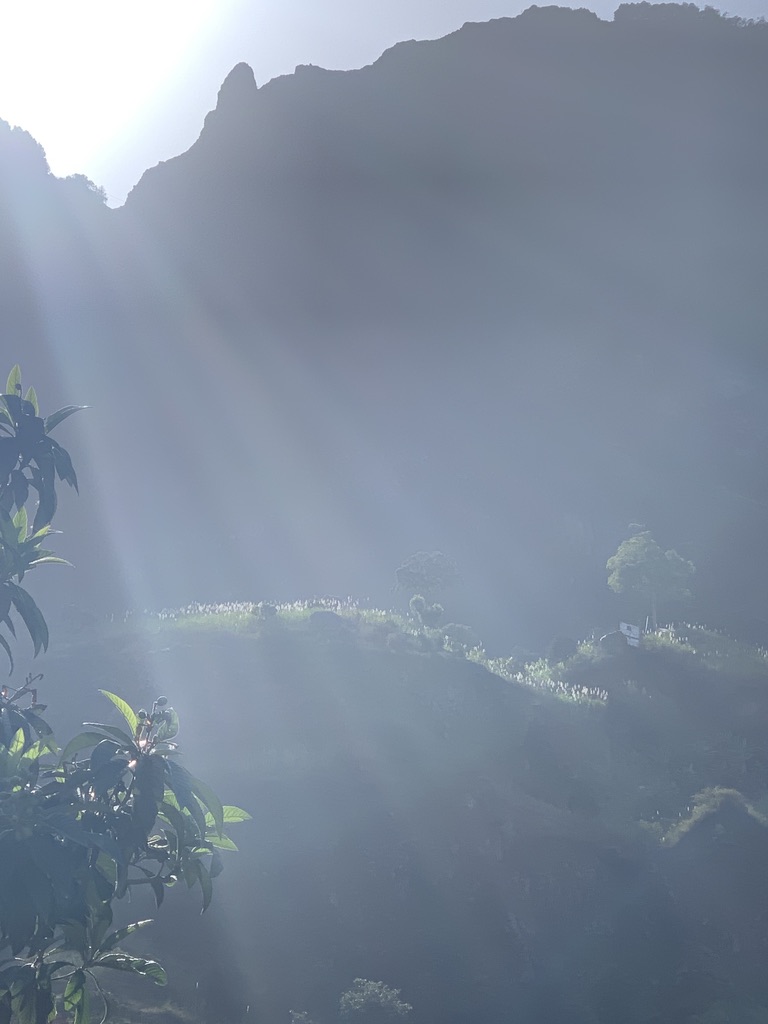
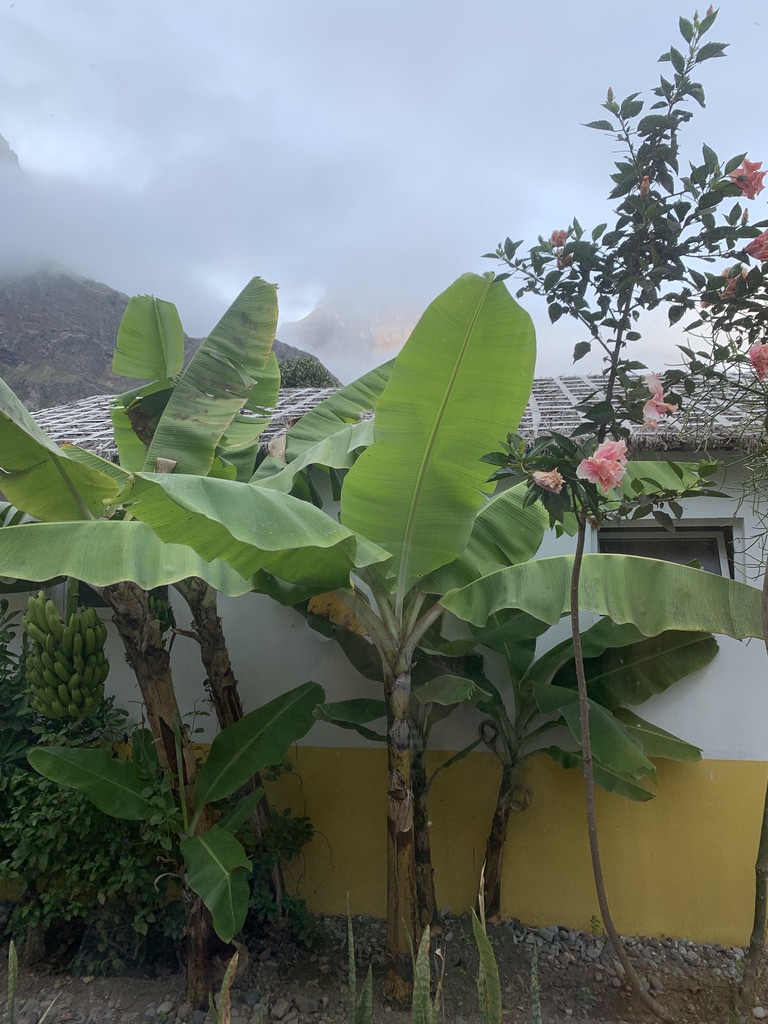
I’ve dinner with the two Oléron boys and Tom joins us later. Tom is from Boston and is spending his third winter here on Santo Antão. Rémy, who’s a regular as well, and Tom know each other. Tom is retired, he’s got time and money isn’t an issue. He’s got a loving wife, but she doesn’t like travelling. That’s why Tom feels lonely sometimes. And he hikes, for me he hikes like hell. “It keeps me young,” he tell me. It does! I’m in awe, really. These guys just run up and down these steep valleys and mountains. A 12km uphill hike is a morning stroll.

I myself am in two minds about going for another hike the next day. I’ve seen on the map that the hike proposed has a very steep climb up at some stage and – being giddy – I’m a bit afraid. In the end I take the chance and walk off.
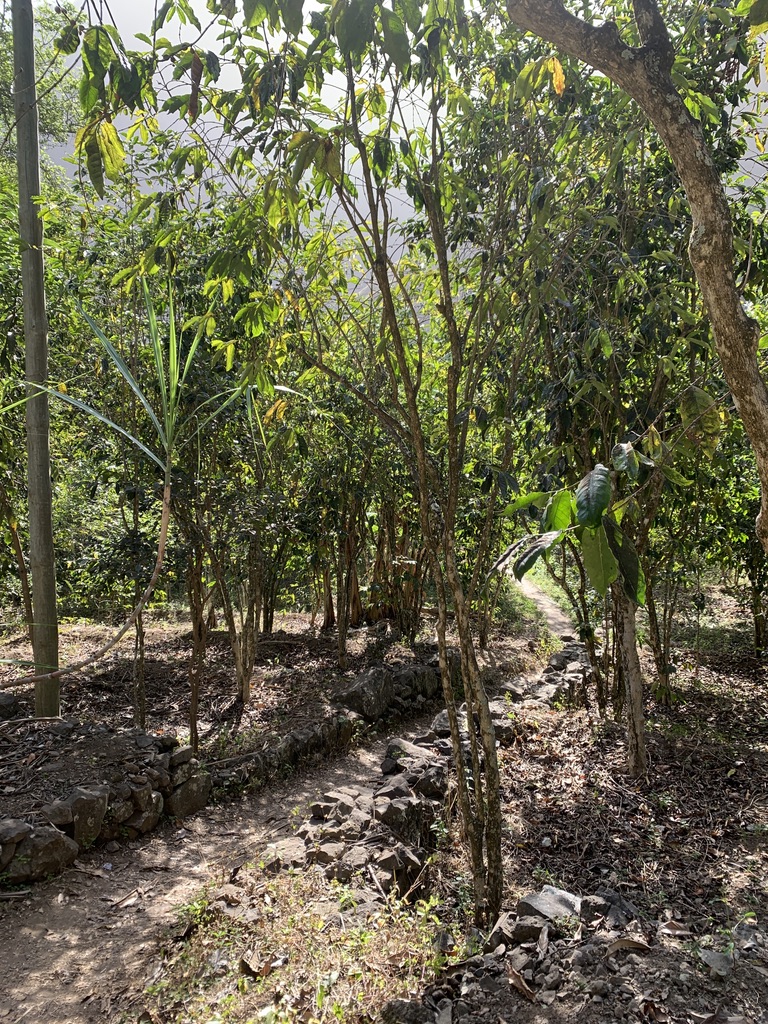
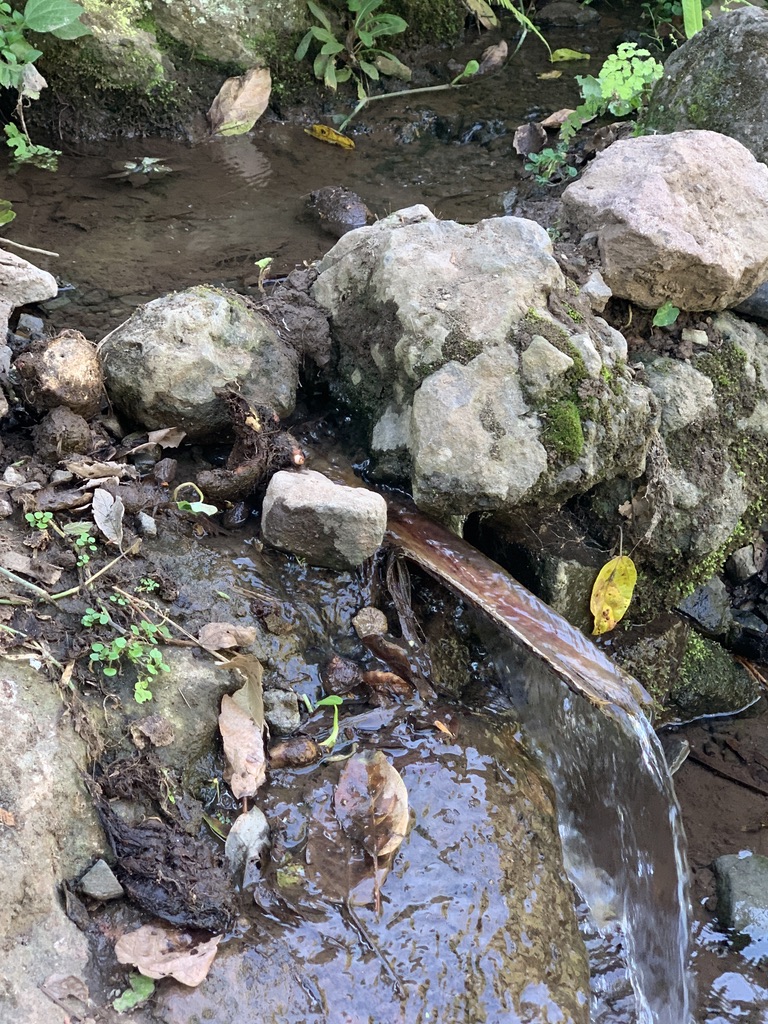
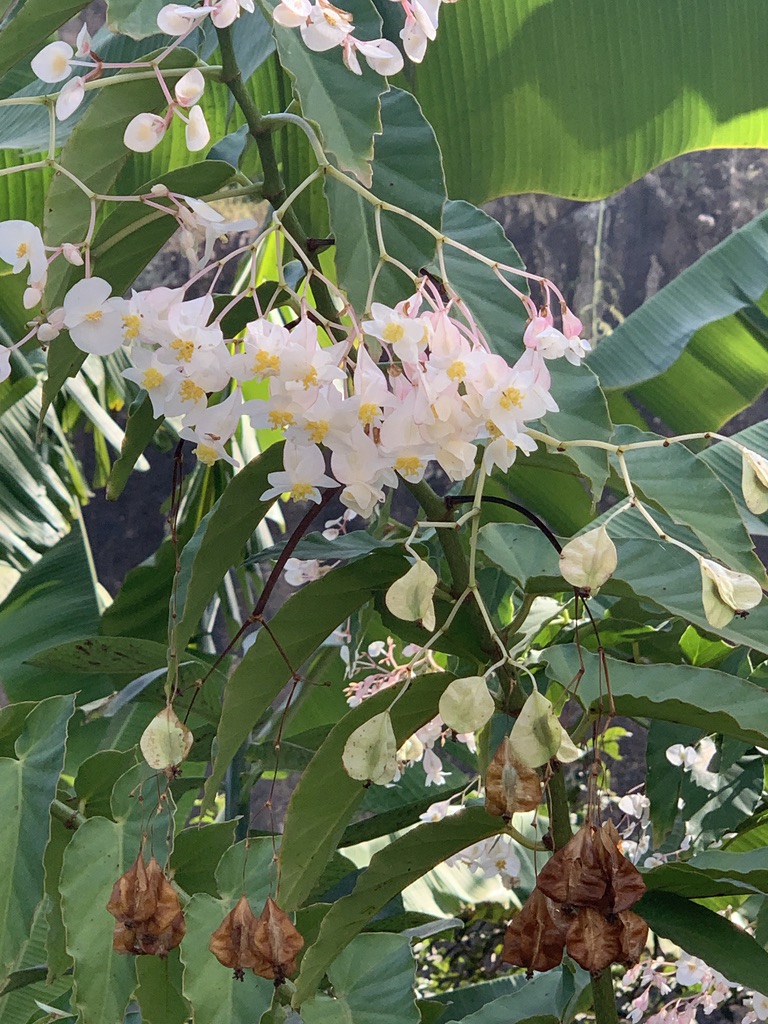

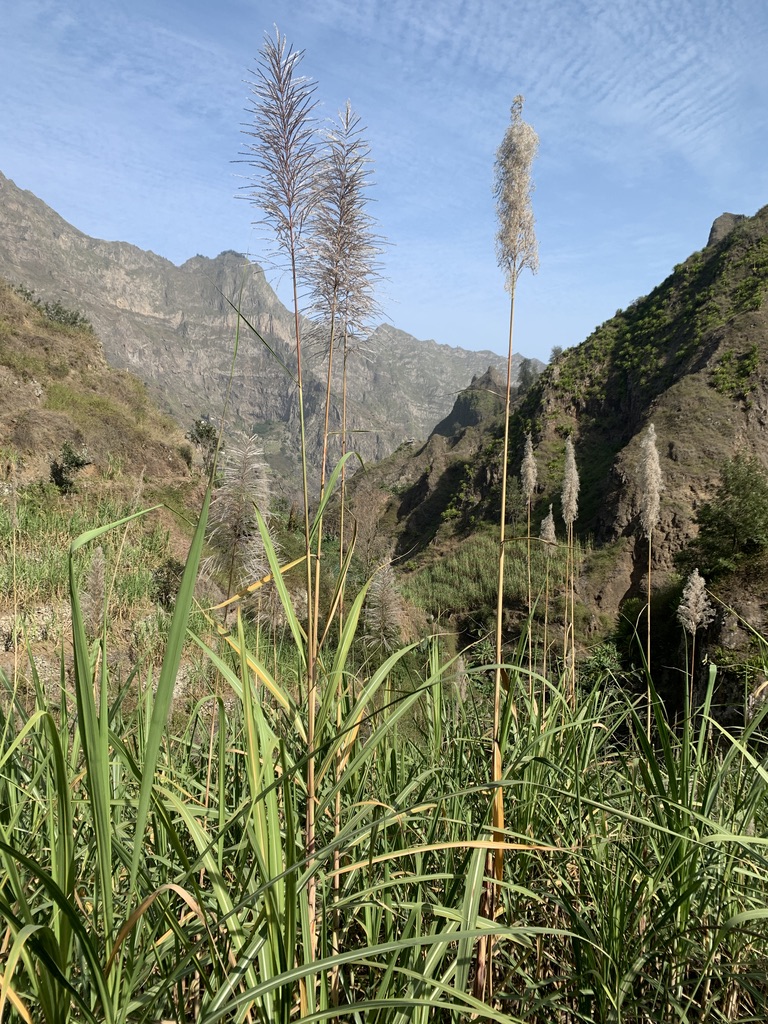
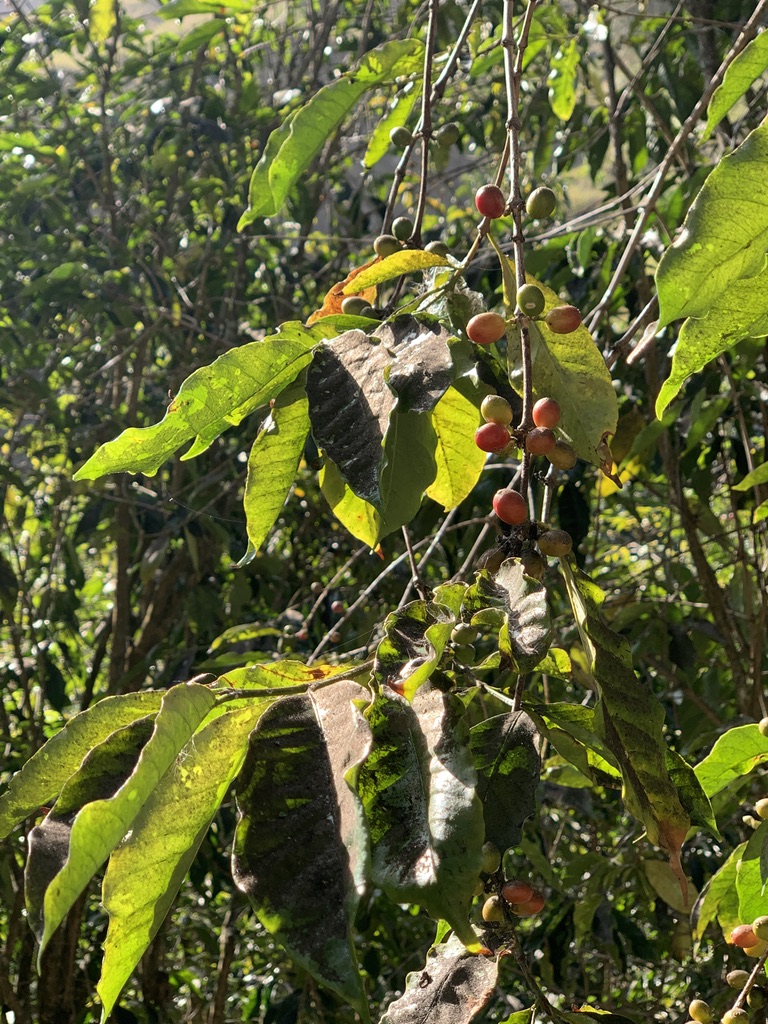
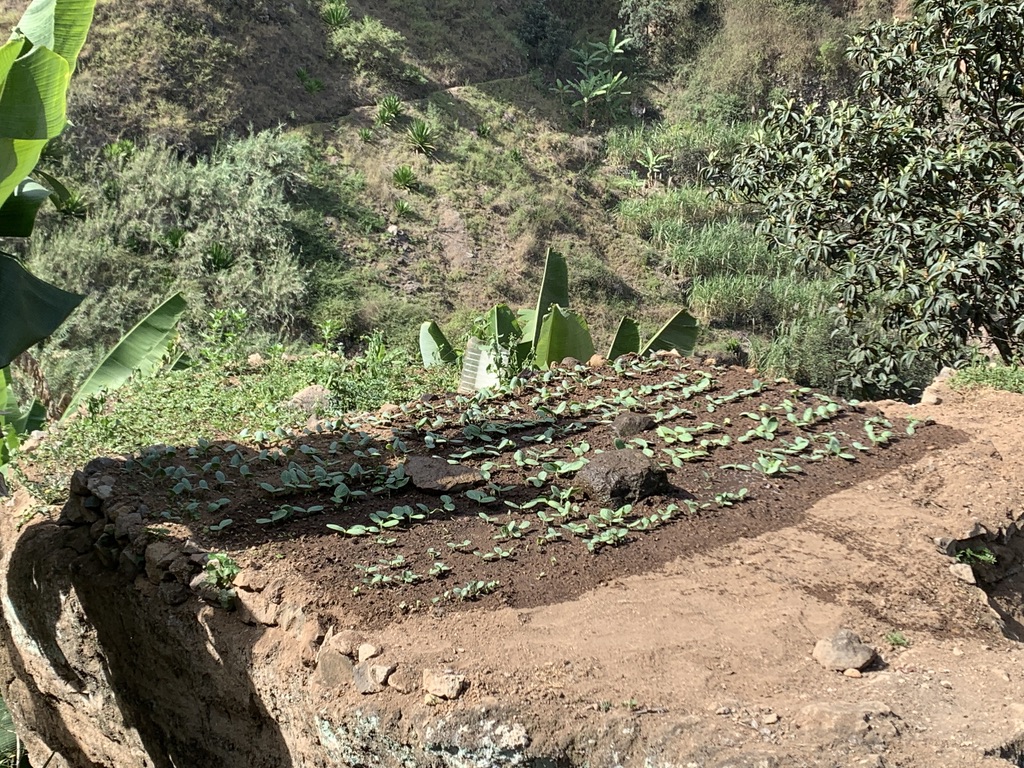
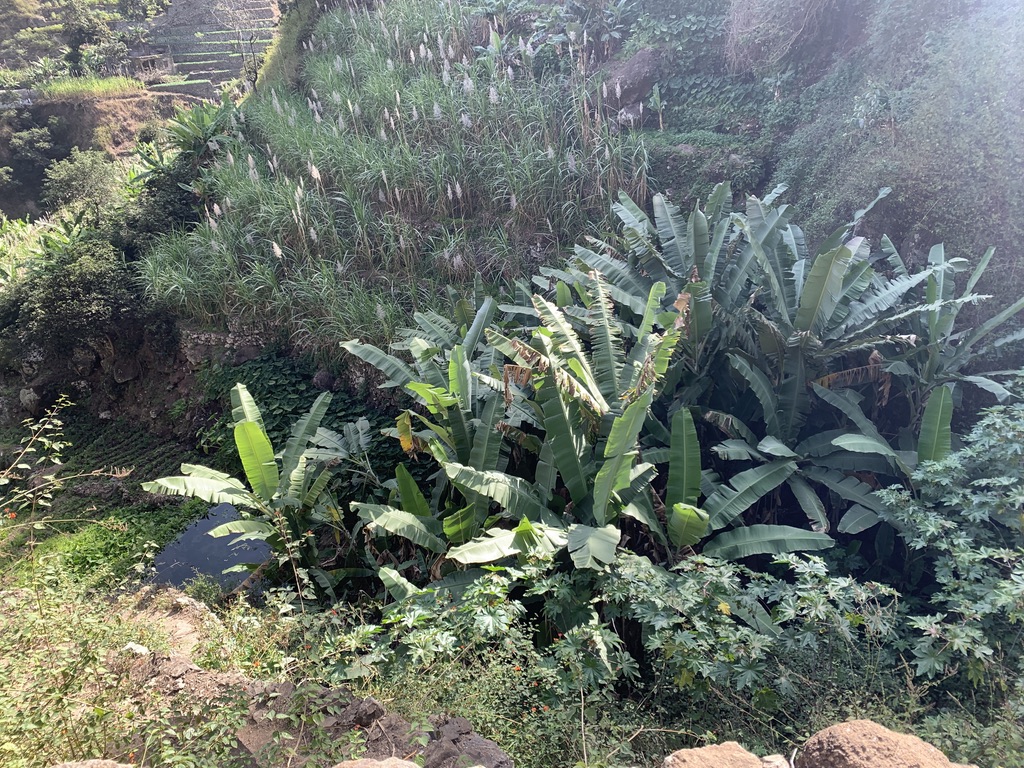

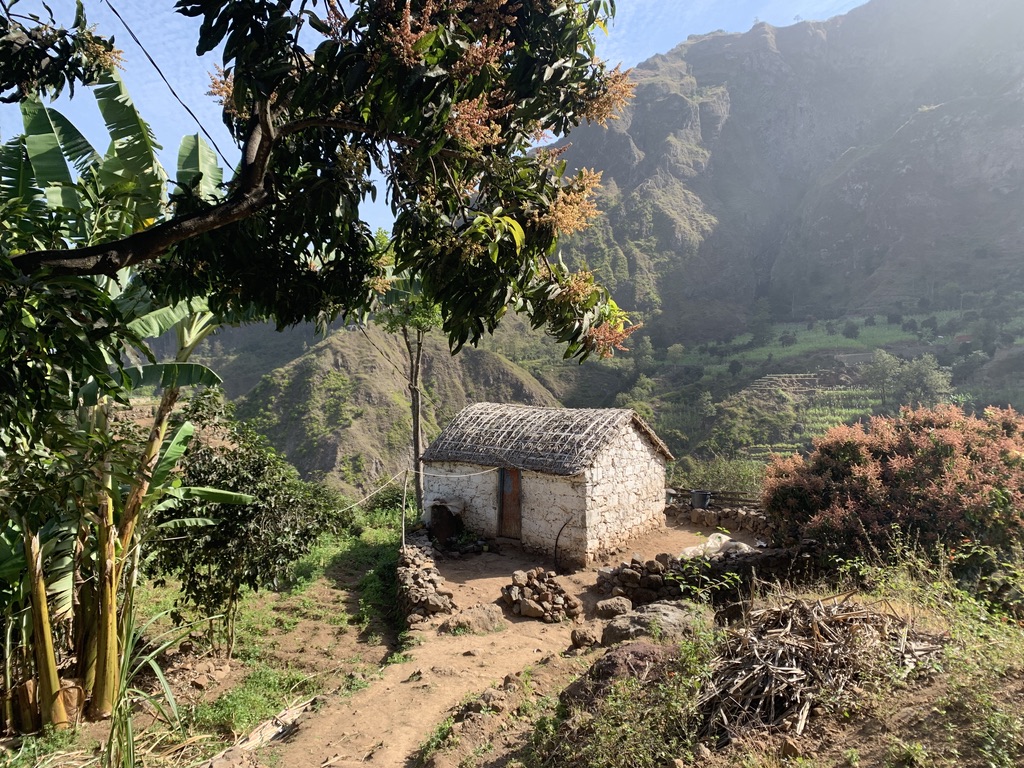
Just at the junction where the path leads off into the world of hundreds of tiny vegetable and fruit fields, terraced one above the other, I meet Marina. Marina is French and thinks she has been deposited in the wrong place by the alugar, the collective taxi. But actually she’s in the right place – and she wants to do the same hike. So, this encourages me and we set off, the two of us. We walk and talk and soon realize that we are fine together. Similar values, some similar interests, she has a better condition than me, but not too much, so we take it easy, take pictures, rest, get lost, find our way and suddenly we are below “’L’antenne”.


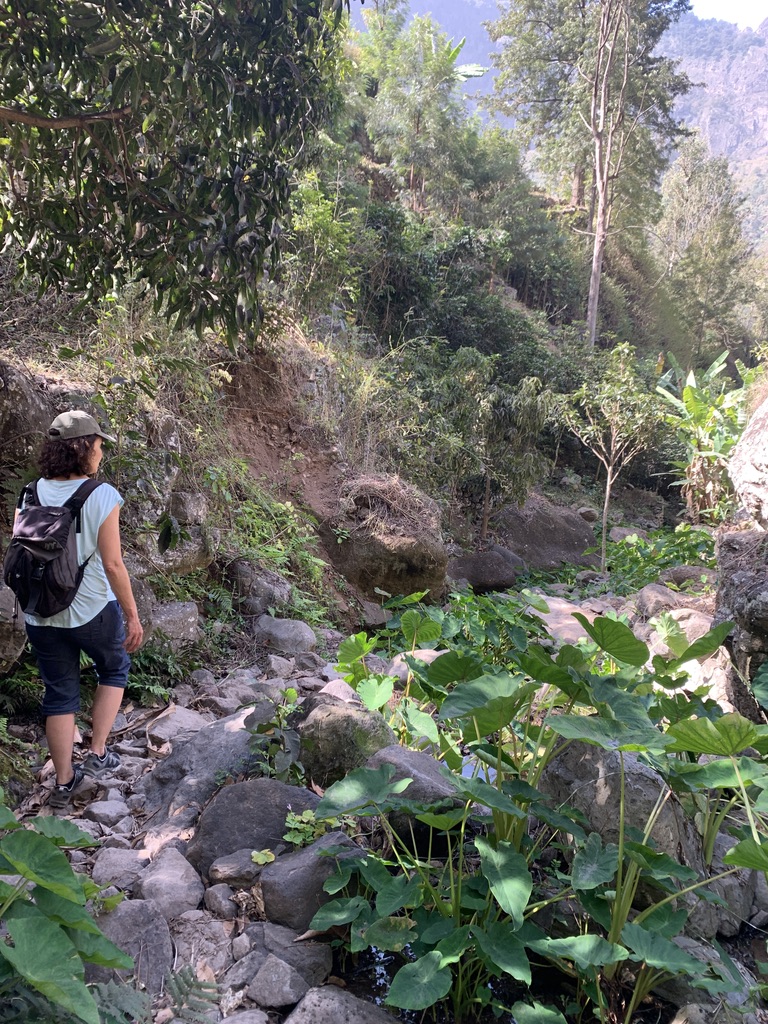
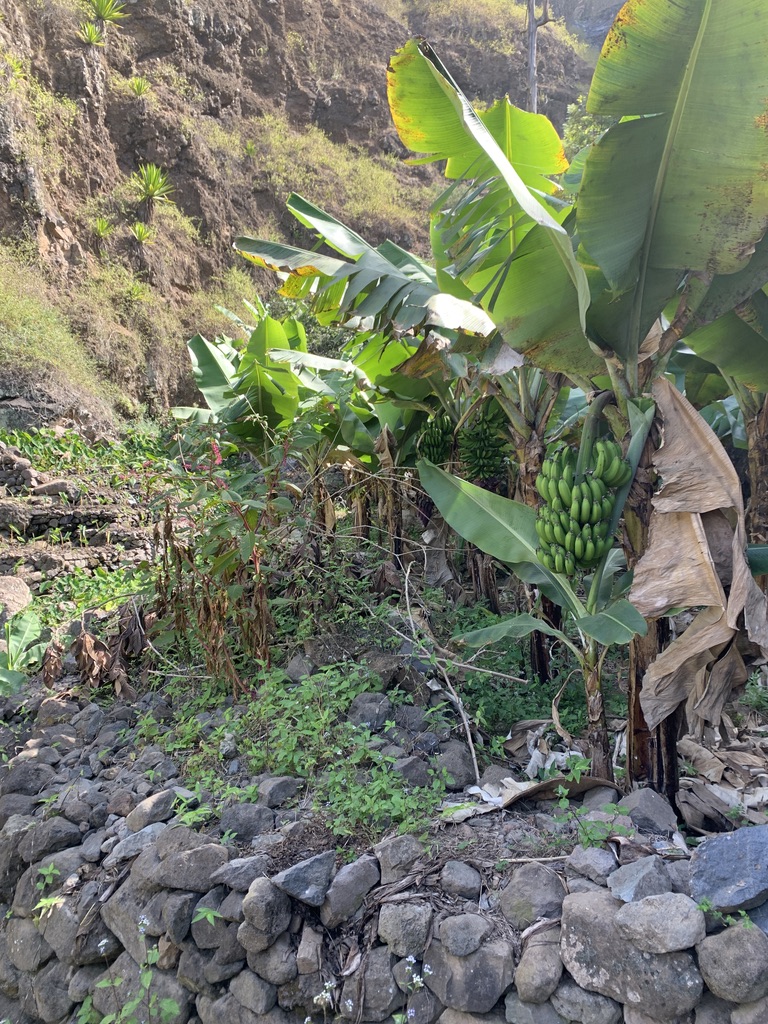
Now the path leads out into very steep grassland, up to the crest which it follows up steep steps to the antenna. Like a beehive there are some houses clustered on this crest, the utmost width being maybe 10 meters. On both side there’s the vertical abyss. Here lives Sandra and she has fresh water and juices, which we gulp down. How stupid to make this ascend at midday! The couple from Britain are also gasping, especially she. „We go for a morning stroll,“ had he said, no water, no escudos, not walking stick.
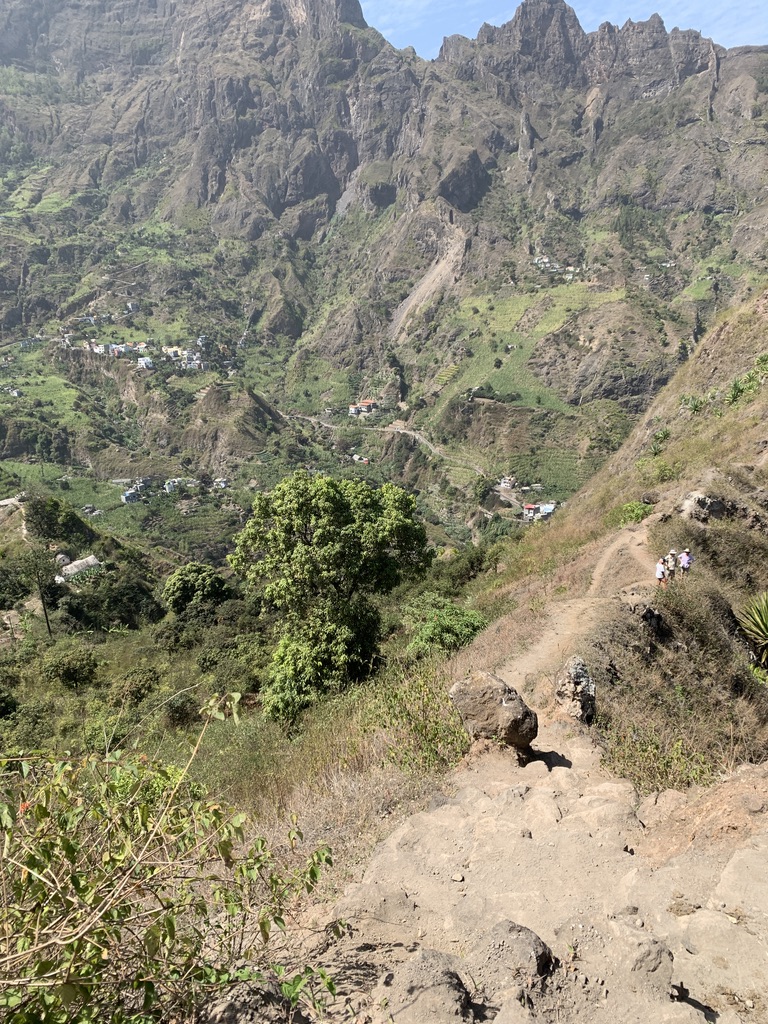
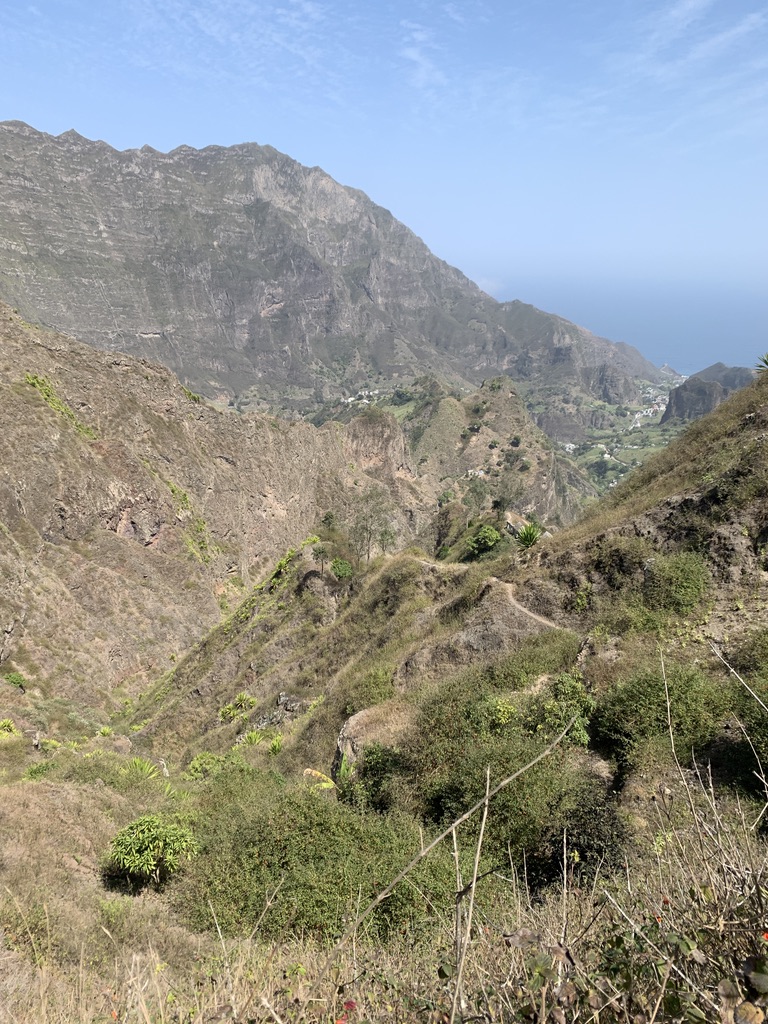
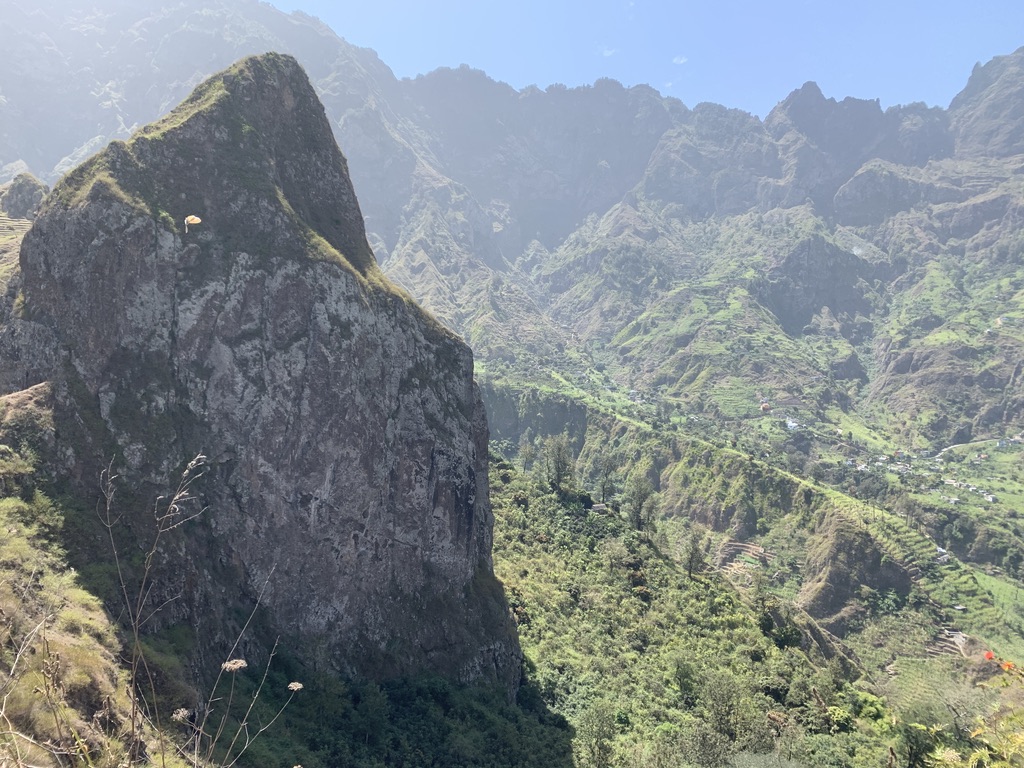
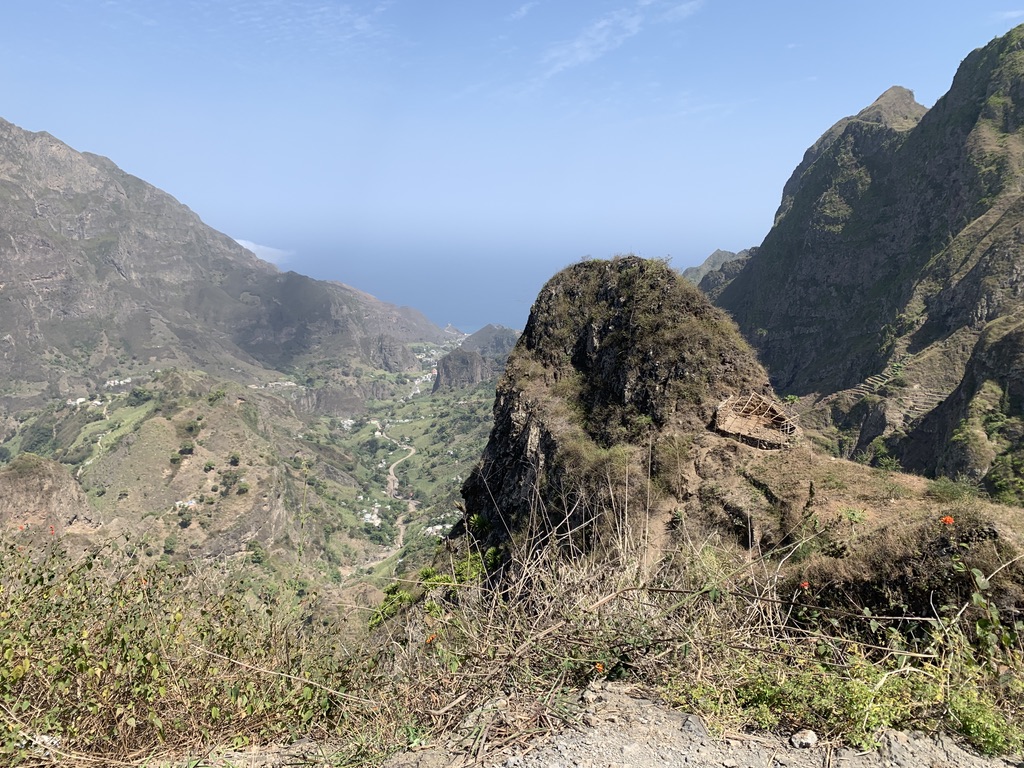
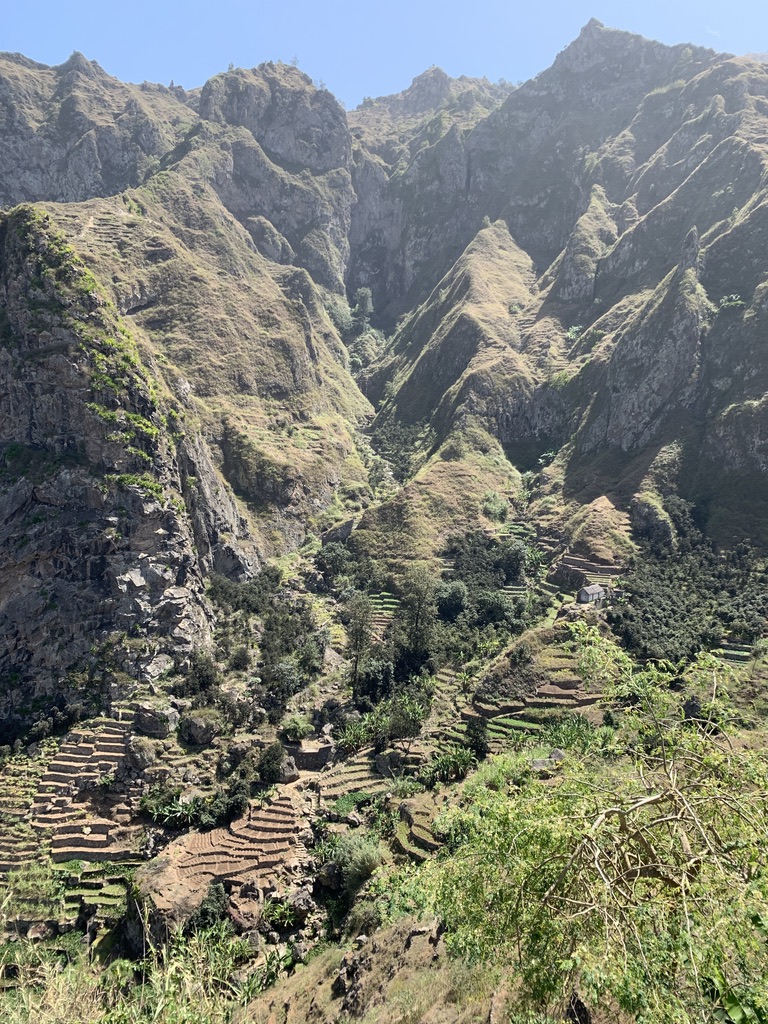
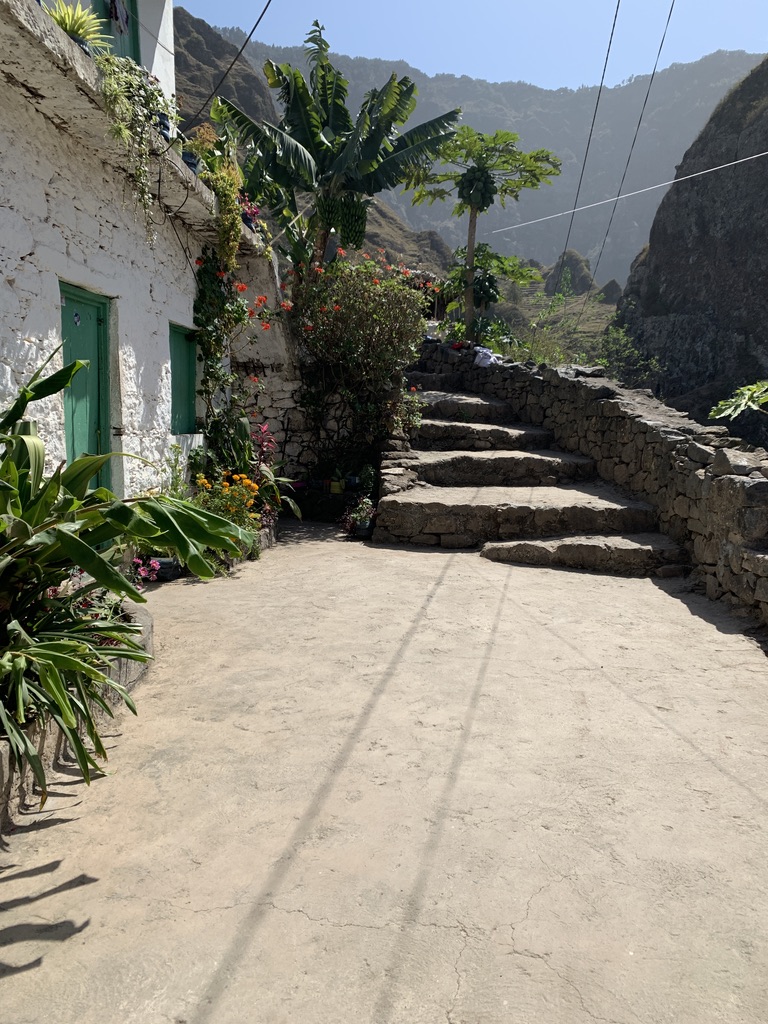
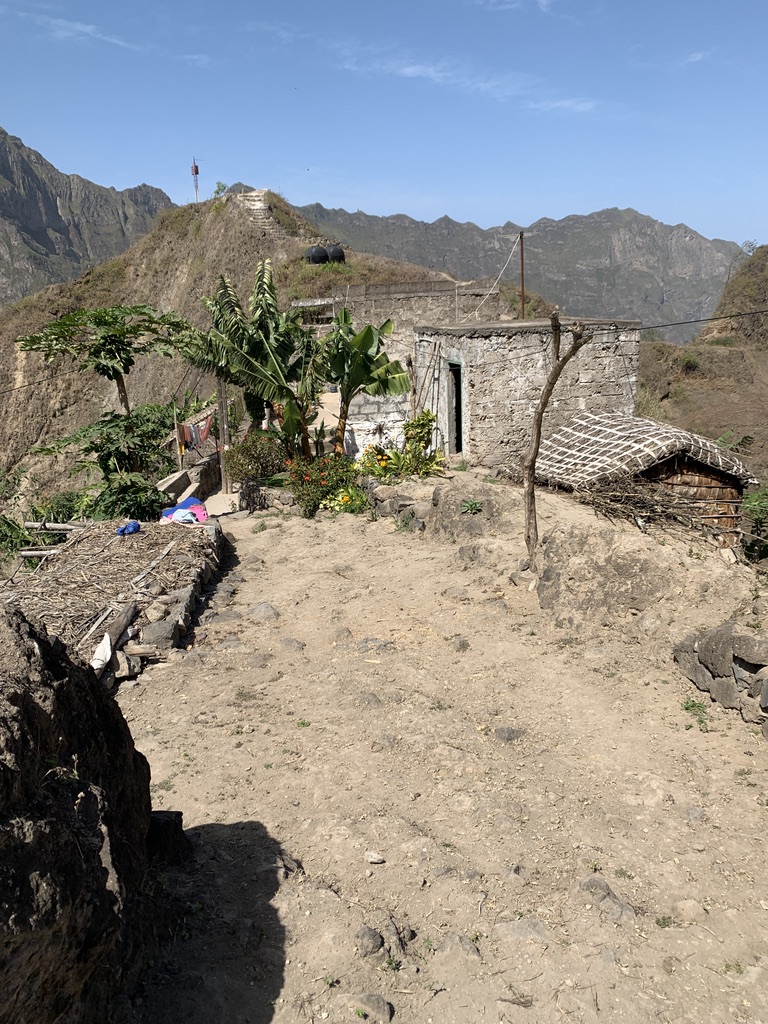
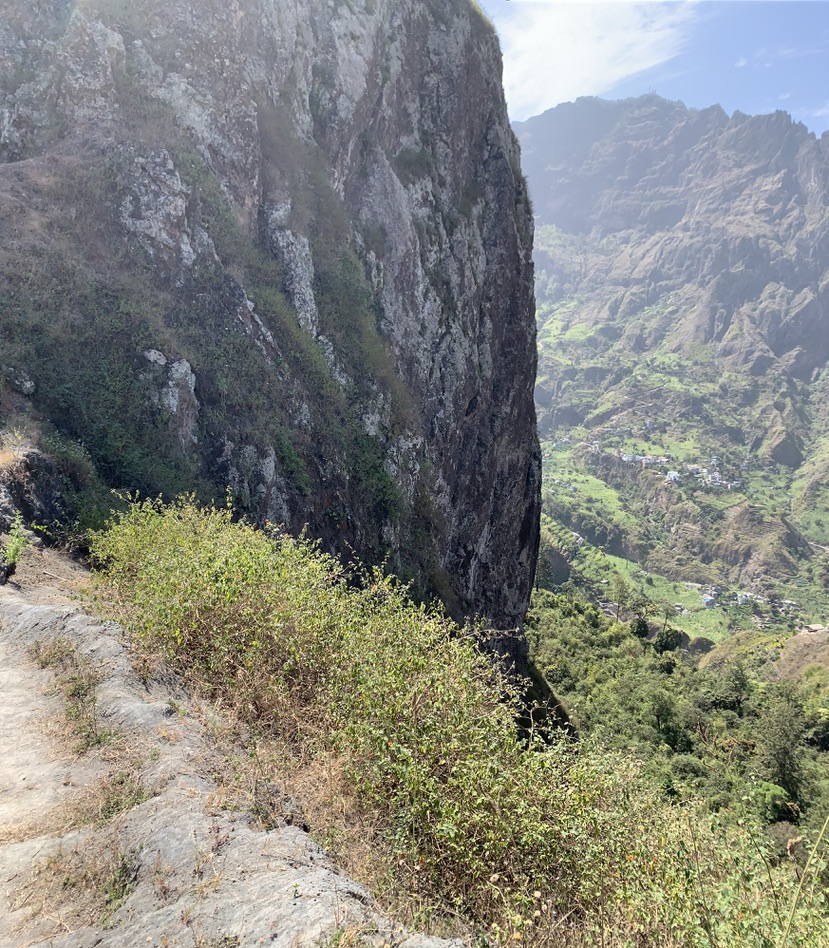

After some time cooling down in the shade we set off again, down the Figueiral de Paùl valley. Really beautiful, but steep again, long again. My untrained legs get loose. I’m so glad when we reach Boca de Figueiral and take an alugar back up.
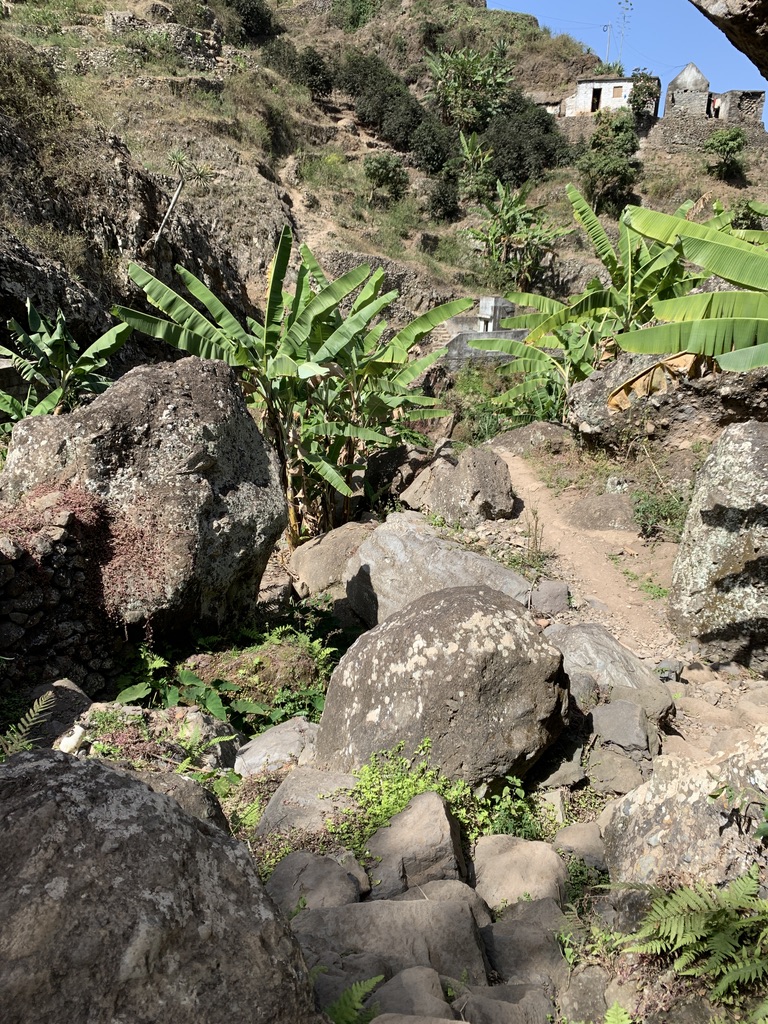
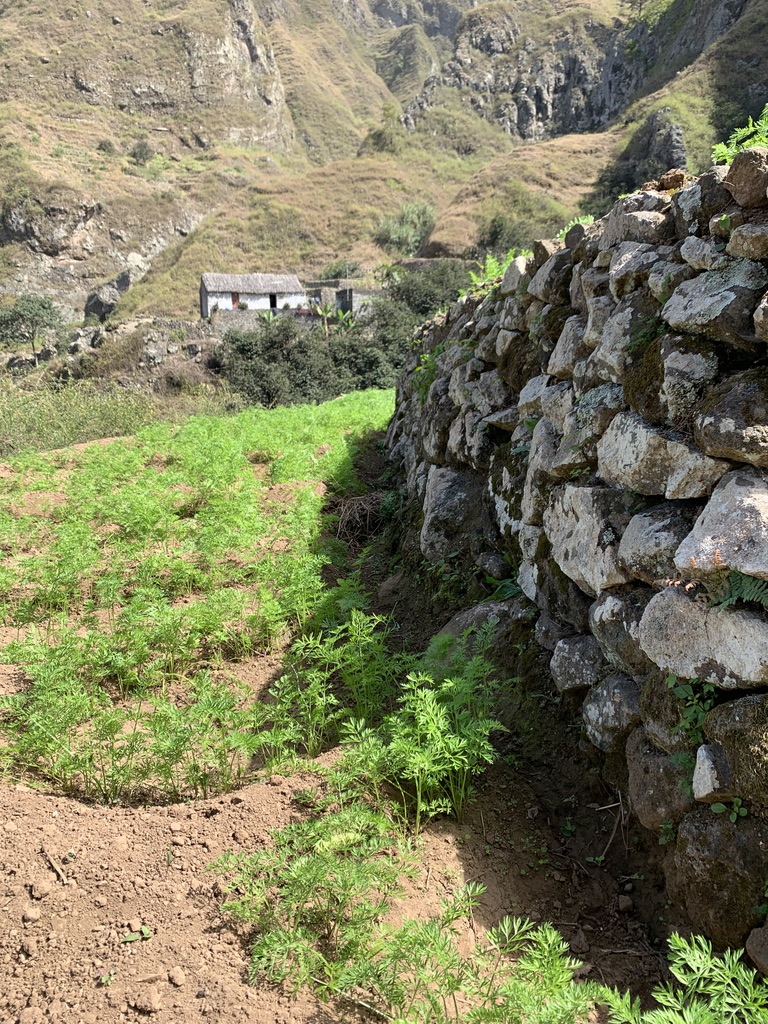


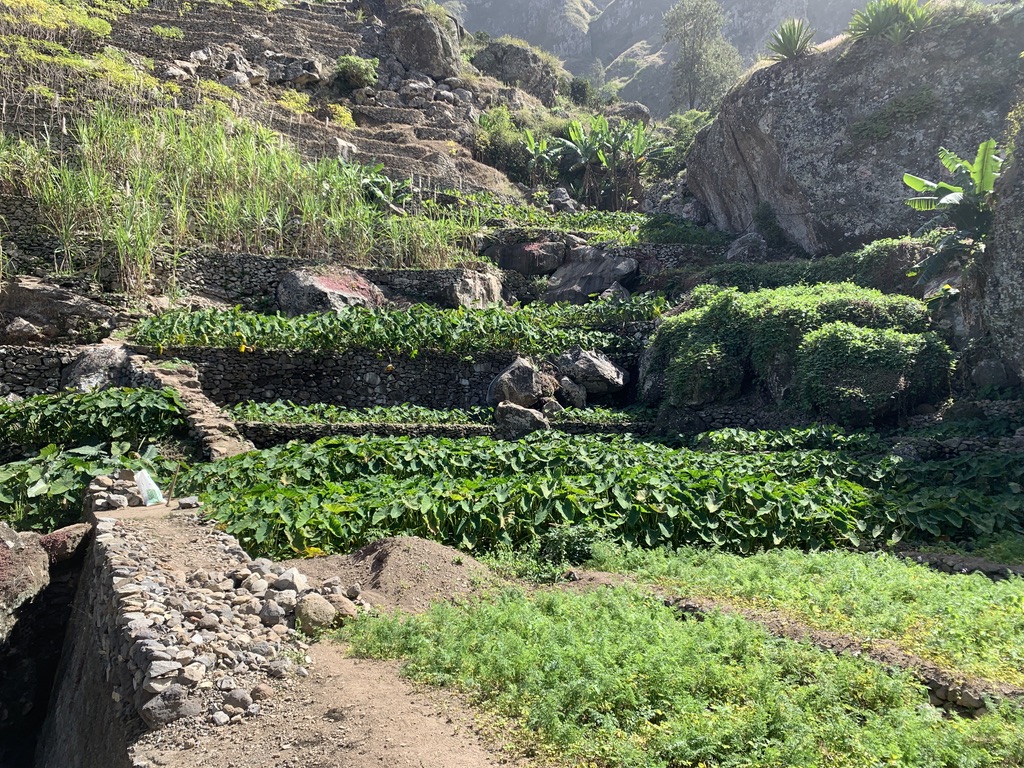
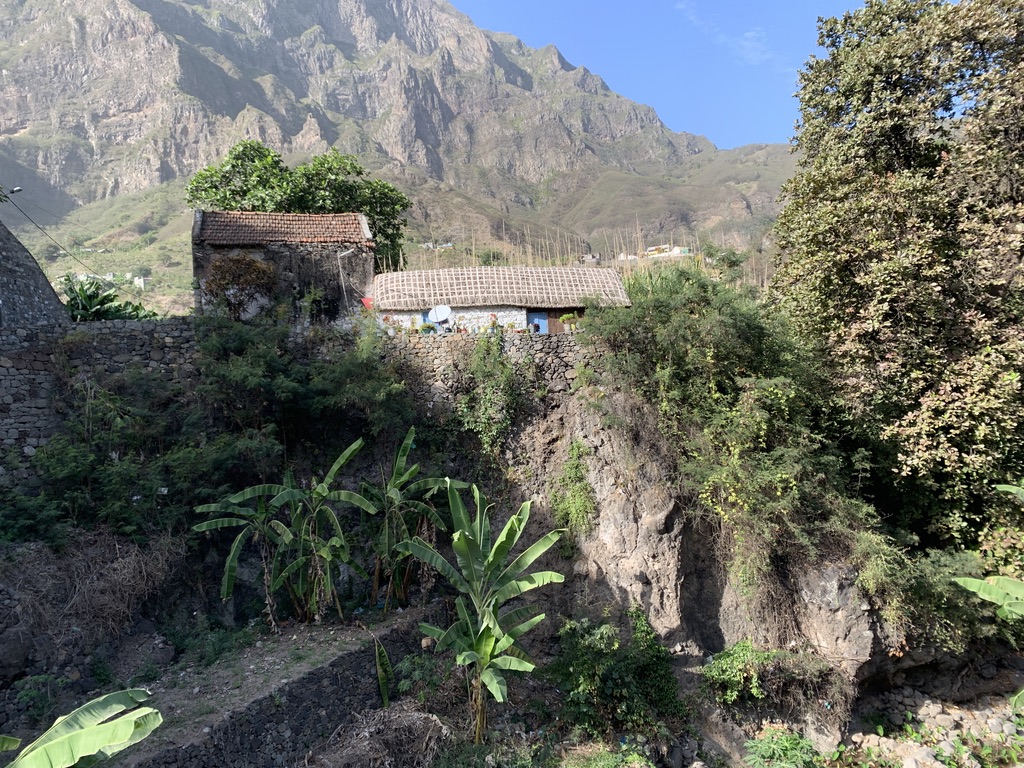
I’ve a new friend. Tomorrow, I’ll meet Marina again and she’ll join me on my trip to Cobra and then to Ponto do Sol.

